#robert e. ward
Explore tagged Tumblr posts
Text

Vincent P. Miceli - Women Priests & Other Fantasies - The Christopher Publishing House - 1985 (cover design by Robert E. Ward)
#witches#women priests#occult#vintage#other fantasies#the christopher publishing house#christopher books#vincent p. miceli#reverend#sociology#robert e. ward#new york#new orleans#1985
174 notes
·
View notes
Text

. I was just thinking what an interesting concept it is to eliminate the writer from the artistic process. If we could just get rid of these actors and directors, maybe we've got something here.
The Player, Robert Altman (1992)
#Robert Altman#Michael Tolkin#Tim Robbins#Greta Scacchi#Fred Ward#Whoopi Goldberg#Peter Gallagher#Brion James#Cynthia Stevenson#Vincent D'Onofrio#Dean Stockwell#Richard E. Grant#Sydney Pollack#Lyle Lovett#Jean Lépine#Thomas Newman#Geraldine Peroni#1992
1 note
·
View note
Text

current list of journalists who signed this letter:
Caspar Salmon
Sophie Monks Kaufman
Hannah Strong
Hanna Flint
Amon Warmann
Swara Salih
Clarisse Loughrey
Sarah Cook
Katie Smith-Wong
Christina Newland
Kelechi Ehenulo
Helen O’Hara
Leila Latif
Kambole Campbell
Josh Slater-Williams
Savina Petkova
Caitlin Quinlan
Shaheena U
Iana Murray
Ellen E Jones
Charles Bramesco
Juan Barquin
Jourdain Searles
Flavia Dima
Tariq Ra’ouf
Tim Robey
Ellis Lamai
Edward Hong
John Nugent
Patrick Sproull
Kayleigh Donaldson
Callie Petch
Justine Smith
Lillian Crawford
Douglas Greenwood
Kelli Weston
Glenn Kenny
Luke Hicks
Josh Spiegel
Scott Tobias
Matthew Morlai Kamara
Laura Venning
Hugo Emmerzael
Vikram Murthi
Wendy Ide
Brandon Streussnig
Jason Bailey
Jake Cole
Kimber Myers
Lauren Lola
Maryam Ahmad
Isaac Feldberg
Patrick Heidmann
Catherine Bray
Manuela Lazić
Tom Beasley
Charlie Shackleton
Rory O’Connor
Stephen A. Russell
Tom Huddleston
George Fenwick
Leslie Byron Pitt
Max Borg
Leonardo Goi
Jill Vranken
Scott Davis
Sarah Bradbury
Charlie Brigden
Matthew Turner
Linda Marric
Paul Devine
Kat Brown
Ryan Lambie
Freda Cooper
Jordan King
Sean Wilson
Mel Campbell
Jaime Rebanal
Jenna Mahale
Alistair Ryder
Jesse Hassenger
Mike McCahill
Sean Gilman
Jude Blay Yawson
Alex Milan Durie
Jon Lyus
Clint Worthington
Sean T. Collins
Brianna Zigler
Steph Green
Theo Rollason
Soraya Nadia McDonald
Steven Nguyen Scaife
Billie Walker
Jacob Stolworthy
Robert Daniels
Reuben Baron
Scott Renshaw
Jason Adams
Katie Kasperson
Oscar Goff
David Jenkins
Scott Dagostino
Rory Doherty
Jeremy Smith
Federica Battiato
Marya E. Gates
William Goodman
Debopriyaa Dutta
Devin Meenan
Quinn Bilodeau
Jennie Kermode
Sandy Schaefer
David Daut
Courtney Enlow
Sheila O’Malley
Steven Sloss
Andrew F. Pierce
Brian Tallerico
Katherine Rife
Jordan Maison
Anam Abbas
Andy Greene
Lindsey Romain
Fatima Sheriff
Erin Musset
Lex Briscuso
Joel Robinson
Angelica Jade Bastién
Carmen Paddock
Mark Asch
Johanna Griesé
BJ Colangelo
Billie Melissa
Rendy Jones
Vince Mancini
Jannat Suleman
Sabina Stent
Dana Stevens
Daniella Shreir
Ziyad Saadi
Travis Johnson
Cameron Ward
Saffron Maeve
Edward Frumkin
Tommaso Tocci
Lieven Trio
Ben Rosenstock
Yasmine Kandil
Dennis Tracy
Patrick Cremona
Mattie Lucas
Richard Fink
Danielle Ryan
Fiona Underhill
Jessica Scott
Heather Wilson
Keith Phipps
Jaime N. Christley
Ian Wang
Maria Lattila
David Daut
Hannah Wales
Rose Dymock
Nadira Begum
Amelia Emberwing
Erik Anderson
Matt Cipolla
Kyle Turner
David Willoughby
Pepe Ruiloba
Arjun Persaud
Ricardo Gallegos Ramos
Akash Saran
Rebecca Sayce
Clem Bastow
Briony Kidd
Sarah Manvel
91 notes
·
View notes
Text
Just a little idea that came to me...I'm taking all medical knowledge from google so if anything is wrong, take it up with them.
It also goes against the grain to have John be this successful at punching him, but what the muses want, they get.
*****
Aaron barely heard his phone over the cacophony in the pub. He went out the back of the pub to answer, thankfully he'd not had much to drink so far so he was with it enough to listen.
"Is that Aaron Dingle."
"Who's this."
"I'm a nurse at Hotten General. I have you down as a emergency contact for a Robert Sugden." That stopped him in his tracks. He knew Robert had changed all his paperwork when they'd got married but he'd assumed that when he'd sent the divorce papers he would've changed it back again.
"What's he done?"
"Mr Sugden was brought in suffering from internal bleeding and is currently in surgery...would you be able to come in to be with him?"
"Um..." He shouldn't, he was going on honeymoon for christ's sake, but at the same time, just like on the bridge, he couldn't just ignore him. "Yeah. I'll be about an hour."
"He should be out of surgery by the time you arrive. Thank you Mr Dingle."
He sinks onto one of the benches as he slips his phone back into his pocket. He has no idea how he's going to explain this to John, not least to his mum, but Robert's hurt and when has he ever been able to stay away from him when he's hurt.
He doesn't go back into the pub, just runs down the village to fetch his car. He'll text everyone when he gets there, at least that way he'll delay the inevitable earache he's in for.
*****
A&E is heaving when he arrives and it's ages before he gets to the front of the queue, his phone burning a hole in his pocket. He wants to wait until he knows more before letting anyone know where he is but surely they've noticed his absence by now. He knows what they'll all think and they're partly right after all.
"Can I help?"
"Robert Sugden, I got a call." Thankfully he's directed to a ward quickly enough and then to his room.
He frowns when he sees PC Swirling outside the room. "What are you doing here?"
"Well I should've guessed you'd be turning up. Tell your husband when he wakes up that missing your probation meeting isn't the wisest decision in the world. And that he's lucky I'm not billing him for the mess in my car."
"What?"
"I'd barely even picked him up and he's throwing up blood in the back of my car. Made a right mess. Oh don't look so worried lad, he'll be right as rain in no time that one."
"Yeah, thanks." He really doesn't want to have a conversation with him so he pushes open the door to Robert's room and there he is. He looks pale against the white sheets.
"What are you doing here?" He hadn't even noticed he was awake.
"They called me. I'm still your next of kin apparently. What have you done to yourself?"
"Oh this was your husband's work I think you'll find." He groans as he tries to sit up and Aaron tries to help before sitting back down, ignoring the jibe at John. "He can punch I'll give him that."
"John did this?"
"Well no one else has punched me today! A few might've wanted to but he was the only one who got lucky enough." He doesn't want to believe it but then he remembers Robert being doubled over while he'd been concentrating on calming John down. "Anyway why did you come?"
"I told you, I'm still your next of kin."
"That only tells me how you know, not why you're here. Not three hours ago you rejected me and now you're by my bedside and if I'm right missing your wedding reception."
"I can go if you want."
"Did I say that? I'm just confused."
"Just because I chose him doesn't mean I don't still care about you. Now I know you're ok, I'll call Vic and she can come and be with you." He gets up, already searching for her number, ignoring the mountain of missed calls and texts he's received.
"Wait...Does he make you happy?" Aaron doesn't answer because yes he does, at least happpier than he's been in six years but if he tells Robert that it'll just hurt him and he'll end up admitting that no one has made him as happy as Robert and he doubts they ever will.
"I married him."
"You're avoiding the question. I only ask because he hasn't exactly made the best first impression on me. I mean, I know I can be difficult to like but putting me in hospital and dobbing me in to the police is a bit much."
"You what?"
"Oh he didn't tell you that, what a surprise. Your hero of a husband, and by the way the medals were a nice touch, was that bothered by me that he decided to get me out of the way one way or another."
"You're being ridiculous. How would he even know you'd missed your meeting?"
"Lucky guess? I don't know, but I could tell from Swirling's face. Maybe it'll all come out when they question him about this." He waves his hand at the equipment all around him. "Assault on your wedding day, nice."
"Why are you being like this?"
"I'm in hospital and when I'm lucky enough to leave here I'm going straight back to prison. What do you mean why am I being like this?"
"You interrupted our wedding! Did you expect him, or me for that matter, to welcome you with open arms?"
"Maybe not, but I didn't expect to end up on the operating table."
"Are you sure it was the punch? I mean did something happen in prison..." He can't miss the flinch but Robert schools his face quickly enough. "I'm not defending him, I just..."
His phone goes off again and he sighs, he'll have to answer or they'll end up calling the police and reporting him missing or something equally dramatic.
"What?"
"Aaron, love, where are you?" At least it's his mum and not John. He's not sure what he'd say to him right now. He's not sure what he's most angry about, him hitting Robert or reporting him. Either way he's not sure he could keep his temper.
"Um...I had to nip out."
"Where?" She knows, he can tell. Not the details but she knows it's to do with Robert. He glances at Robert and he's got that knowing smirk on his face, he knows her too well just like Aaron. "I knew it..."
"It's not like that. He's in hospital."
"Then call his sister! He's not your problem anymore!"
"He is when John's the one who put him here! I'll be back soon." He hangs up before she can say another word. "Don't say a word."
"I wouldn't. Nice to know she hasn't changed though." He stops smiling. "Is that the only reason you're still here?"
"What?"
"Because he did this? You worried I'll report him?"
"Well won't you? Be ideal for you, get him away from me."
"Knowing my luck he'd end up being my cell mate. No Aaron, it's my word against his because I can't see you, your mum or Vic backing me up. Maybe I deserved it."
"No. No you didn't. Look Rob..." He trails off because what can he say. The only thing Robert wants to here is that Aaron wants him back and he can't say that. He's just married John.
"It's ok. You gave me your answer didn't you. You should go, get back to your party before your mum calls out the navy or something. I'll tell them to change my emergency contact. I won't bother your anymore."
"It wasn't a bother." He doesn't want to leave. He knows he should, but he really doesn't know if he can.
"Yeah but I'm not your problem anymore. You should go."
"Are you...are you coming back to the village when you're out?"
"I don't know. Probably, got nowhere else to go really. Don't worry I won't cause trouble, for you anyway." He smiles, the little lopsided smile of his that always had Aaron slightly weak kneed. "I'm ok, promise."
"Yeah. Ok. I'll see you around then."
"Bye Aaron."
*****
Well that didn't quite turn out how I expected but hope you like it.
39 notes
·
View notes
Text
An extensive list of the sources I have found on Internet Archive
Last updated 6/8/25
It would be quite selfish of me to keep these to myself, wouldn't it? This list will be updated frequently, in accordance to what I have found. These were found while doing my own research for various topics, and taken from the bibliographies of many books. Some of these I will have cited in posts of mine, many others will not appear anywhere in my work. Mostly primary sources, but quite a few books make their appearance.
Sorted alphabetically by surname of author
*Some sources, for the sake of readability, have their title somewhat shortened and/or authors removed. In this case, the sourced author will be chosen according to reverse alphabetization, as this is how they are listed on the Archive
A
Alden, John Richard. General Gage in America: Being Principally a History of his Role in the American Revolution
Anburey, Thomas. With Burgoyne to Quebec; An Account of the Life at Quebec and of the Famous Battle at Saratoga
Atwood, Rodney. The Hessians: Mercenaries From Hessen-Kassel in the American Revolution
B
Balderston, Marion and Syrett, David. The Lost War: Letters From British Officers During the American Revolution
Bass, Robert D. The Green Dragoon
Burr, Aaron. Memoirs of
C
Clinton, George. Public Papers of Volume 1 Volume 2 Volume 3 Volume 4 Volume 5 Volume 6 Volume 7 Volume 8 Volume 9 Volume 10
Clinton, Henry. Observations on Some Parts of the Answer of Earl Cornwallis to Sir Henry Clinton's Narrative Clinton, Henry. The American Rebellion; Sir Henry Clinton's Narrative of His Campaigns, 1775-1782
Commanger, Henry Steele. Spirit of '76: The Story of The American Revolution as Told by Participants
E
Ewald, Johann von. Diary of the American War: A Hessian Journal
G
Grant, Alfred. Our American Brethren: A History of Letters in the British Press During the American Revolution, 1775-1781
H
Hamilton, Alexander. Papers of Volume 5 Volume 8 Volume 9 Volume 10 Volume 12 Volume 13 Volume 15 Volume 16 Volume 18 Volume 19 Volume 22
K
Kapp, Friedrich. The Life of Frederick William von Steuben
Kemble, Stephen. Journal of
L
Laurens, Henry. Papers of Volume 1 Volume 2 Volume 3 Volume 4 Volume 7 Volume 8 Volume 11 Volume 12 Volume 13
Lefkowitz, Arthur S. George Washington's Indispensable Men
M
Massey, Gregory D. John Laurens and The American Revolution
Moultrie, William. Memoirs of
Murdoch, David H. Rebellion in America: A Contemporary British Viewpoint, 1765-1783
P
Parton, James. The Life and Times of Aaron Burr
R
Ramsay, David. The History of The Revolution of South Carolina
Robson, Eric. Letters From America, 1773 to 1780, Being the Letters of a Scots Officer, Sir James Murray, to his Home During the War of American Independence
S
Steiner, Bernard Christian. The Life and Correspondence of James McHenry
Stevens, Benjamin Franklin. The Campaign of Virginia, 1781: An Exact Reprint of Six rare Pamphlets on the Clinton-Cornwallis Controversy
T
Tarleton, Banastre. A History of The Campaigns of 1780 and 1781, in The Southern Provinces of North America
V
Van Doren, Carl. Secret History of the American Revolution: An Account of the Conspiracies of Benedict Arnold and Numerous Others
W
Ward, Christopher. The War of The Revolution
Washington, George. Papers of Agricultural papers
#writings#amrev#american revolution#alexander hamilton#john laurens#henry laurens#george washington#william moultrie#david ramsay#george clinton#baron von steuben#how many volumes does alexander have? dont worry about it#aaron burr#resources#banastre tarleton#james mchenry#thomas gage#john burgoyne#henry clinton#sir henry clinton#charles cornwallis#benedict arnold#hessian#hessians
124 notes
·
View notes
Text

JUNE 20, 2025 RELEASE
All my videos can be found here, full release under the read more! I am also offering the two Operation Mincemeat videos as a bundle for 30 USD!
ORDER FORM HERE
This release includes: Goddess, Hadestown (Myra/Ali), Wicked (Derek Klena), Love Life, Operation Mincemeat x2
GODDESS May 18, 2025 (E) | Off-Broadway (Previews) | 4K MP4 (8.8GB) | bikinibottomday’s master Cast: Amber Iman (Nadira), Austin Scott (Omari), Destinee Rea (Cheche), Arica Jackson (Rashida), Ayana Jackson (Siti), J Paul Nicholas (Hassan), Nick Rashad Burroughs (Ahmed), Jason Bowen (Madongo), Reggie D. White (Balozi) Notes: Good 4K capture of this new musical! Some fairly prominent head obstruction, especially on the sides, most action is still captured. Frequent wandering and unfocusing. Includes curtain call, audio fed from external source. https://flic.kr/s/aHBqjCeL86 | ASKING $18 USD NOT FOR SHARING EXCEPT THROUGH ME UNTIL DECEMBER 17, 2025
HADESTOWN May 28, 2025 (M) | Broadway | 4K MP4 (9.59GB) | bikinibottomday’s master Cast: Ali Louis Bourzgui (Orpheus), Myra Molloy (Eurydice), Merle Dandridge (Persephone), Matthew Patrick Quinn (t/r Hades), Daniel Breaker (Hermes), Marla Louissaint (Fate), Jessie Shelton (Fate), Kay Trinidad (Fate), KC Dela Cruz (s/w Worker), Malcolm Armwood (Worker), Sydney Parra (Worker), Tanner Ray Wilson (s/w Worker), Chibueze Ihuoma (Worker) Notes: Excellent 4K capture of the new cast with Matthew! Starts about 30 seconds into “Road To Hell.” About a minute long blackout afterward due to latecomers. Increased wandering / readjustment and unfocusing throughout. Includes curtain call and “We Raise Our Cups,” audio fed from external source. https://flic.kr/s/aHBqjCg29F | ASKING $20 USD NOT FOR SHARING EXCEPT THROUGH ME UNTIL DECEMBER 17, 2025
LOVE LIFE March 30, 2025 (E) | New York City Center | 4K MP4 (9.8GB) | bikinibottomday’s master Cast: Brian Stokes Mitchell (Sam Cooper), Kate Baldwin (Susan Cooper), Christopher Jordan Jr. (Johnny Cooper), Andrea Rosa Guzman (Elizabeth Cooper), Clarke Thorell (Mr. Cynic/"Progress" Octet), Nicole Fernandez-Coffaro (Miss Horoscope), Sara Jean Ford (Miss Ideal Man), Ta'Nika Gibson (Miss Mysticism), John Edwards (Hobo/The M.C.), Andrea Jones-Sojola ("Susan's Dream" Trio), Mary Illes ("Susan's Dream" Trio), Kerry Conte ("Susan's Dream" Trio), Jordan Barrow ("Economics" Quartet), Heath Saunders ("Economics" Quartet), Nicholas Ward ("Economics" Quartet), Cameron Loyal ("Economics" Quartet), Daniel Everidge ("Progress" Octet), John Harmon Cooper ("Progress" Octet), Adam Bashian ("Progress" Octet), Michael Milkanin ("Progress" Octet), Renni Anthony Magee ("Progress" Octet), Joseph Ryan Harrington ("Progress" Octet), Cory Lingner ("Progress" Octet) Notes: Excellent 4K capture of this lovely production! 30 second blackout at the end due to navigating around the overhang. 30 second blackout near the start when house lights go up. Occasional obstruction in frame which doesn’t block off much. Some wandering and unfocusing throughout. Includes curtain call, audio fed from external source. https://flic.kr/s/aHBqjC7mnE | ASKING $20 USD NOT FOR SHARING EXCEPT THROUGH ME UNTIL DECEMBER 17, 2025
OPERATION MINCEMEAT March 5, 2025 | Broadway (Previews) | 4K MP4 (10.13GB) | bikinibottomday’s master Cast: Natasha Hodgson (Ewen Montagu & others), David Cumming (Charles Cholmondeley & Others), Claire-Marie Hall (Jean Leslie & others), Jak Malone (Hester Leggatt & others), Zoe Roberts (Johnny Bevan & others) Notes: Excellent 4K capture of this show’s eighteenth preview! Some wandering and unfocusing throughout. Includes curtain call, audio fed from external source. https://flic.kr/s/aHBqjC4DNb | ASKING $20 USD NOT FOR SHARING EXCEPT THROUGH ME UNTIL DECEMBER 17, 2025
OPERATION MINCEMEAT March 12, 2025 (E) | Broadway (Previews) | 4K MP4 (9.92GB) | bikinibottomday’s master Cast: Natasha Hodgson (Ewen Montagu & others), David Cumming (Charles Cholmondeley & Others), Claire-Marie Hall (Jean Leslie & others), Jak Malone (Hester Leggatt & others), Zoe Roberts (Johnny Bevan & others) Notes: Excellent 4K capture of this show’s twenty fifth preview! Some wandering and unfocusing throughout. Ten second blackout during “Bevan’s Update.” Includes curtain call, audio fed from external source. https://flic.kr/s/aHBqjC5kTL | ASKING $20 USD NOT FOR SHARING EXCEPT THROUGH ME UNTIL DECEMBER 17, 2025
WICKED June 3, 2025 | Broadway | 4K MP4 (10.68GB) | bikinibottomday’s master Cast: Lissa DeGuzman (s/b Elphaba), Allie Trimm (Glinda), Derek Klena (t/r Fiyero), NaTasha Yvette Williams (Madame Morrible), Michael Thatcher (u/s The Wonderful Wizard of Oz), Jenna Bainbridge (Nessarose), Daniel Quadrino (Boq), William Youmans (Doctor Dillamond) Notes: Excellent 4K capture of Lissa and Derek’s return! Some wandering and unfocusing throughout. Includes curtain call, audio fed from external source. https://flic.kr/s/aHBqjCgGfb | ASKING $20 USD NOT FOR SHARING EXCEPT THROUGH ME UNTIL DECEMBER 17, 2025
22 notes
·
View notes
Text


John Brown was a controversial figure who played a major role in leading the United States to civil war. He was a devout Christian and lifelong abolitionist who tried to eradicate slavery from the United States through increasingly radical means. Unlike most abolitionists, Brown was not a pacifist, and he came to believe that violence was necessary to dislodge slavery. He engaged in violent battles with pro-slavery citizens in Kansas and Missouri and led a raid on the federal munitions depot at Harper’s Ferry. Although the raid failed spectacularly, it helped precipitate the Civil War and turned Brown into a martyr for the abolitionist cause.
John Brown was born in Torrington, Connecticut, on May 9, 1800, into a deeply religious family. The family was led by a staunchly anti-slavery father, Owen Brown, who was an agent for the Underground Railroad. Brown grew up in a frontier Ohio town in which whites were the minority and where his father taught him that all people should be treated equally. When Brown was 12, he witnessed the beating of a slave boy. This violence had a profound impact on him and helped lead him to his fanatical opposition to slavery.
In 1851, he established the League of Gileadites, an organization that worked to protect escaped slaves from slave hunters.
After Congress passed the Kansas and Nebraska Act in 1854, five of Brown’s sons left for Kansas, and he joined them the following year. He and his sons were heavily involved in “Bleeding Kansas,” defending the city of Lawrence, Kansas, against pro-slavery raiders from Missouri. Brown then led a raid into the pro-slavery town of Pottawatomie Creek, Missouri, during which five pro-slavery men were killed.
On October 16, 1859, he and 21 men raided the federal arsenal at Harper’s Ferry, Virginia, on the theory that slaves would rise up against their masters when word spread of Brown’s actions. Although Brown gained control of the arsenal, the slave rebellion failed to materialize. Brown’s rebellion was swiftly crushed when U.S. Army Colonel Robert E. Lee and 100 Marines surrounded him. Brown was captured, quickly tried, and convicted of treason. He was hanged on December 2, 1859.
His execution was marked by the tolling of bells at many northern churches, and Brown’s actions were looked upon increasingly favorably in the North as the nation headed towards civil war. A song, “John Brown’s Body,” was written about him and was popular in the North during the Civil War. Julia Ward Howe would use the same tune when she wrote the words to the “Battle Hymn of the Republic.”
•••
John Brown fue una figura controvertida que desempeñó un papel fundamental en la guerra civil de Estados Unidos. Fue un cristiano devoto y abolicionista de toda la vida que intentó erradicar la esclavitud del país mediante métodos cada vez más radicales. A diferencia de la mayoría de los abolicionistas, Brown no era pacifista y llegó a creer que la violencia era necesaria para erradicar la esclavitud. Participó en violentos enfrentamientos con ciudadanos esclavistas en Kansas y Misuri y dirigió un asalto al depósito federal de municiones de Harper's Ferry. Aunque el asalto fracasó, contribuyó a precipitar la Guerra Civil y convirtió a Brown en un mártir de la causa abolicionista.
John Brown nació en Torrington, Connecticut, el 9 de mayo de 1800, en el seno de una familia profundamente religiosa. La familia estaba liderada por un padre firmemente antiesclavista, Owen Brown, quien era agente del Ferrocarril Subterráneo. Brown creció en un pueblo fronterizo de Ohio donde los blancos eran minoría y donde su padre le enseñó que todas las personas debían ser tratadas por igual. A los 12 años, Brown presenció la paliza de un niño esclavo. Esta violencia lo impactó profundamente y lo condujo a su oposición fanática a la esclavitud.
En 1851, fundó la Liga de Galaaditas, una organización que trabajaba para proteger a los esclavos fugitivos de los cazadores de esclavos.
Tras la aprobación por el Congreso de la Ley de Kansas y Nebraska en 1854, cinco de los hijos de Brown se fueron a Kansas, y él se unió a ellos al año siguiente. Él y sus hijos participaron activamente en el "Sangrado de Kansas” , defendiendo la ciudad de Lawrence, Kansas, contra los invasores esclavistas de Misuri. Brown lideró entonces un ataque en la ciudad esclavista de Pottawatomie Creek, Misuri, durante la cual murieron cinco hombres esclavistas.
El 16 de octubre de 1859, él y 21 hombres asaltaron el arsenal federal de Harper's Ferry, Virginia, bajo la teoría de que los esclavos se rebelarían contra sus amos al correrse la voz de las acciones de Brown. Aunque Brown tomó el control del arsenal, la rebelión de esclavos no se materializó. La rebelión de Brown fue rápidamente aplastada cuando el coronel del ejército estadounidense Robert E. Lee y 100 marines lo rodearon. Brown fue capturado, juzgado rápidamente y condenado por traición. Fue ahorcado el 2 de diciembre de 1859.
Su ejecución se celebró con el repique de campanas en muchas iglesias del norte, y las acciones de Brown fueron cada vez más bien vistas en el Norte a medida que la nación se encaminaba hacia la guerra civil. Se escribió una canción sobre él, "El cuerpo de John Brown", que fue popular en el Norte durante la Guerra Civil. Julia Ward Howe usaría la misma melodía al escribir la letra del "Himno de Batalla de la República".
#john brown#the good lord bird#black history is everybody's history#historyfacts#black history is world history#history#blackhistorymonth#blackhistory#blackpeoplematter#slavery#anti slavery#blacklivesalwaysmatter#blacklivesmatter#black history#black history is american history#black history matters#black history month#historia#historic#abolitionist#knowyourhistory#culture#blackhistoryyear#blackownedandoperated#black lives matter#black tumblr#knowledgeispower#knowledgeisfree#knowlegde#Kansas
27 notes
·
View notes
Photo

George Armstrong Custer
George Armstrong Custer (l. 1839-1876) was an officer in the US Army, serving in the cavalry from 1861 to 1865 during the American Civil War and the wars against the Plains Indians 1866-1876. Although he became a widely recognized hero during the Civil War, he is best remembered for his death at the Battle of the Little Bighorn.
Custer established a reputation for recklessness, courage, and self-promotion early in the Civil War and, by 1863, after the Battle of Gettysburg, was a national hero. He blocked the retreat of General Robert E. Lee (l. 1807-1870) in April 1865 and was present at Appomattox Court House when Lee surrendered to General Ulysses S. Grant (l. 1822-1885). After the war, he oversaw Reconstruction in Texas before taking command of the newly formed 7th Cavalry in campaigns against the Native Americans of the West.
He led his troops against the Cheyenne people at the Washita Massacre/Battle of the Washita River in November 1868 and, ignoring the terms of the Treaty of Fort Laramie of 1868, marched his troops into the Black Hills in 1874 where he discovered gold. News of this discovery soon brought more settlers and miners into Sioux and Cheyenne territory, igniting the Great Sioux War of 1876-1877. At the Battle of the Little Bighorn (25-26 June 1876) Custer and his men were slaughtered by Arapaho, Cheyenne, and Sioux warriors under chief Sitting Bull (l. c. 1837-1890). Afterwards, thanks in large part to the efforts of his wife, Elizabeth Bacon "Libbie" Custer (l. 1842-1933), George Armstrong Custer came to be regarded as a great American hero.
His legacy and reputation held until shortly before the Second World War (1939-45) when scholars began challenging the traditional narrative. Today, Custer is a controversial figure, often condemned for his brutality and ruthlessness. Although Custer should certainly be held accountable for his actions, it must also be recognized that he was primarily advancing the genocidal policies of his government which saw the American Indian as an obstacle to progress, civilization, and Manifest Destiny.
Early Years & West Point
George Armstrong Custer was born on 5 December 1839 in New Rumley, Ohio, to Emanuel Henry Custer, a blacksmith, and his second wife, Marie Ward Kirkpatrick. He was named after a minister as his mother hoped this would encourage him to follow that path. He had three older half-siblings from his mother's first marriage and four full siblings, including Thomas and Boston, who would also join the military and die with him in battle.
He was sent to live with his older half-sister and her family in Monroe, Michigan, to attend school and met the girl who would one day become his wife, Elizabeth Clift Bacon. After graduating, he moved to Hopedale, Ohio, and enrolled at the Hopedale Normal College, pursuing a teaching degree. He began his teaching career in Cadiz, Ohio, in 1856 and boarded at the home of the Holland family, where he fell in love with the daughter, Mary Jane Holland. He hoped to marry her but found little opportunity for advancement in Ohio, so he decided to change careers and apply to West Point Military Academy. Scholar Nathaniel Philbrick comments:
He'd been a seventeen-year-old schoolteacher back in Ohio when he applied to his local congressman for an appointment to West Point. Since Custer was a Democrat and the congressman was a Republican, his chances seemed slim at best. However, Custer had fallen in love with a local girl, whose father, hoping to get Custer as far away from his daughter as possible, appears to have done everything he could to persuade the congressman to send the schoolteacher with a roving eye to West Point.
(47)
Custer entered West Point in July 1857 and, before the end of his first session, had earned 27 demerits. By graduation, he had been given more demerits than any of the other cadets in his class. After graduation in June 1861, he faced court martial for failing to break up a fight between cadets but was only reprimanded as the American Civil War was already underway. Many of Custer's classmates had left to fight for the Confederacy and the Union forces were in dire need of trained officers. Custer was commissioned a second lieutenant and sent to drill volunteers in Washington, D.C.
Continue reading...
33 notes
·
View notes
Text

The End of the World As We Know It: New Tales of Stephen King's The Stand will be published in hardcover and e-book on August 19, 2025 via Gallery Books.
Edited by Christopher Golden and Brian Keene, the anthology features 34 short stories based on The Stand. It includes an introduction by Stephen King, a foreword by Golden, and an afterword by Keene.
Contributors include Wayne Brady & Maurice Broaddus, Poppy Z. Brite, Somer Canon, C. Robert Cargill, Nat Cassidy, V. Castro, Richard Chizmar, S.A. Cosby, Tananarive Due & Steven Barnes, Meg Gardiner, Gabino Iglesias, Jonathan Janz, Alma Katsu, Caroline Kepnes, Michael Koryta, Sarah Langan, Joe R. Lansdale, Tim Lebbon, Josh Malerman, Ronald Malfi, Usman T. Malik, Premee Mohamed, Cynthia Pelayo, Hailey Piper, David J. Schow, Alex Segura, Bryan Smith, Paul Tremblay, Catherynne M. Valente, Bev Vincent, Catriona Ward, Chuck Wendig, Wrath James White, and Rio Youers.
Since its initial publication in 1978, The Stand has been considered Stephen King’s seminal masterpiece of apocalyptic fiction, with millions of copies sold and adapted twice for television. Although there are other extraordinary works exploring the unraveling of human society, none have been as influential as this iconic novel—generations of writers have been impacted by its dark yet ultimately hopeful vision of the end and new beginning of civilization, and its stunning array of characters. Now for the first time, Stephen King has fully authorized a return to the harrowing world of The Stand through this original short story anthology as presented by award-winning authors and editors Christopher Golden and Brian Keene. Bringing together some of today’s greatest and most visionary writers, The End of the World As We Know It features unforgettable, all-new stories set during and after (and some perhaps long after) the events of The Stand—brilliant, terrifying, and painfully human tales that will resonate with readers everywhere as an essential companion to the classic, bestselling novel.
Pre-order The End of the World As We Know It.
#the stand#stephen king#christopher golden#wayne brady#paul tremblay#book#gift#richard chizmar#tananarive due#gabino iglesias#caroline kepnes#joe r. lansdale#josh malerman#chuck wendig#catriona ward
42 notes
·
View notes
Text
If Ned Stark became King
Hypothetically speaking. Let's say Robert and Rhaegar killed each other in the Battle of The Trident and Ned had no choice but to take the Iron Throne because The Rebellion expected it of him. Here is how I could see things going.
Tywin lannister would have been sentenced to death do to his part in the deaths of Ella Martell, Rhaenys and baby Aegon.
Jamie has three options. He killed the King he was sworn to protect which should mean either a death sentence or a sentence to the wall. If he could convenience Ned that he did the right and honorable thing by keeping the city from being burned maybe he could have lived and be Lord of Casterly Rock.
If Jamie died, Tyrion would have become Lord of Casterly Rock.
He would send for Queen Rhaella and Viserys and baby Daenerys in peace promising safety. Rhaella would have been allowed to live and raise Daenerys possibly in the capital or on Dragon Stone. Viserys would have been sent to the Eryie as a ward of Lord Jon Arryn. ( Ned had fond memories of being warded there, a good place for a confused young child).
Now for Jon, this is my belief of what would have happened. Jon would have been named Prince and heir and betrothed to Ned's first born daughter, in this case Sansa. This would unite both the rebellion and House Targaryen uniting the kingdom again.
Stannis would have been given temporary lordship over Dragonstone, holding it for Viserys. And would still be Lord of Storms End.
The Martells would be happy because they would have been given the Mountain and Tywin would've been executed for his crimes. I could see Ned also fostering Jon there. By all rights Jon is sort of related to the Martells. Its unknown if Ella knew that Rhaegar was going to remarry or not, if she knew and told her family I could see them opening their arms to Jon.
Now for Winterfell, with Ned at Kings Landing, Benjen would be the stark in the north. Its unknown why Benjen joined the Nights watch, I think he just plain wanted to. Ned would ask Benjen to hold Winterfell for a time before he joins, till either Robb is ready to take over, or Ned leaves the thrown for Jon.
Since the Eddard-Catelyn marriage had already been arranged it would not change. Marriages would be vastly different however.
Eddard and Cats marriage ensures an alliance between the Tullys and Starks.
Robb would then be promised to Margaery Tyrell when they both came of age thereby ensuring an alliance between the Tyrells and Starks.
Jaime Lannister and Lysa Tully would be betrothed thereby ensuring an alliance with The Westerlands and the Riverlands and, by extension, the Crown.
Because Jon Arryn had no heirs and was getting older he would be wed as well but since he was already Lord Paramount of the Vale his bride would be from a lesser vassal house from the Reach.
Prince Oberyn would be wed to Cersei hereby ensuring an alliance with Dorne and the Westerlands.
Arya Stark and Quentyn Martell
Arianne Martell and Theon Greyjoy
Viserys and Shireen
Daenerys and Willas
Varys and Baelish would be summarily dismissed from their services in the capital. They would be given holdfasts somewhere far away and forever be barred from the capital or from raising armies.
Grand Maester Pycelle would be sent to the Citadel for reassignment elsewhere. An election for a new Grand Maester would take place then (as is the Citadels way).
Small Council members:
Hand of the King: Jon Arryn
Grand Maester: Marwyn
Master of Coin: Olenna Tyrell
Master of Ships: Balon Greyjoy (bring him into the fold)
Lord Commander of the King’s Guard: Barristan Selmy
Master of Whispers: Prince Doran of Dorne (Bringing Dorne into the Fold as well)
Master of Laws: Brynden Tully
Lord Commander of the City Watch: Mace Tyrell
One of Ned’s first and continuing acts would be to repair the damage, both physical and emotional from Robert’s Rebellion and to repair the relations and trust between the common people and the Crown.
All soldiers that fought against Robert and Eddard during the campaign would be forgiven and pardoned and allowed to return to their homes without consequence. Their leaders, depending on their level of loyalty, would be offered a chance to swear fealty to the Starks. Any that refused would be sent to the Wall and their lands, estates, and positions would be given to loyal nobles.
Ned understood that the job of a noble is to help the people (he considers them his children), and he would immediately order all noble houses of a certain wealth to pay a one-time reparation tax to lift the poor out of poverty and to secure a positive working relationship with them.
Because so many noble houses have been killed off and there is a lack of trueborn individuals left in the kingdom tournaments would be held throughout the kingdom that would be open to the common man, the winners of which would receive a large reward of coin, be allowed to squire with the guarantee of knighthood, and a holdfast. These new nobles would be extremely loyal to the house that allowed them knighthood as well as the crown that elevated their status. These tournaments would also serve to lift the spirits of the common people.
If Ned took the throne the world would be a lot different and ultimately the story would be considerably more boring because the “game” would never happen.
#ASOIAF#Ned Stark#Eddard Stark#Catelyn Stark#Robb Stark#Jon Snow#Arya STark#Sansa Stark#Margaery Tyrell#Robbaery#Jaime Lannister#Tywin Lannister#Cersei Lannister#Oberyn Martell#Doran Martell#Lysa Tully#Quentyn Martell#Theon Greyjoy#Arianne Martell#Viserys Targaryen#Shireen Baratheon#Daenerys Targaryen#Willas Tyrell#Jon Arryn#Marwyn#Olenna Redwyne#Balon Greyjoy#Barristan Selmy#Hoster Tully#Mace Tyrell
88 notes
·
View notes
Text
(Mostly) Lost, but Not Forgotten: Omar Khayyam (1923) / A Lover’s Oath (1925)

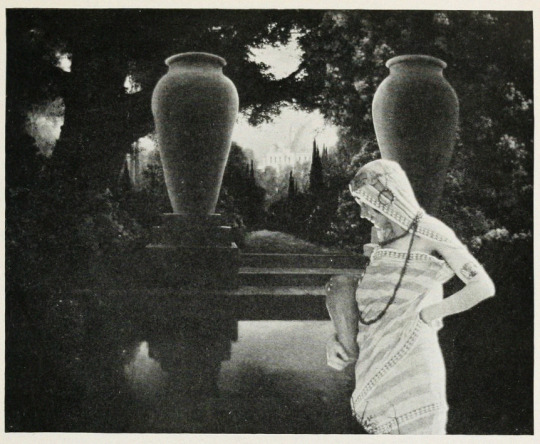


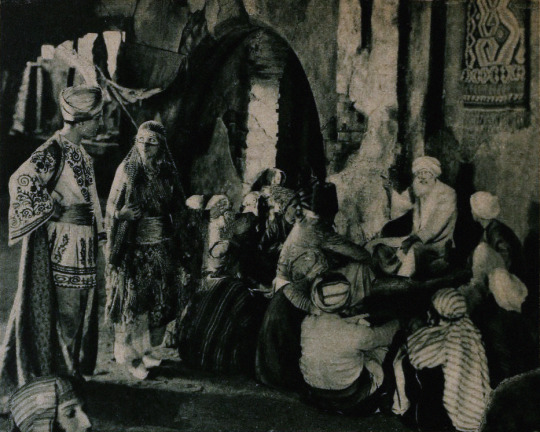


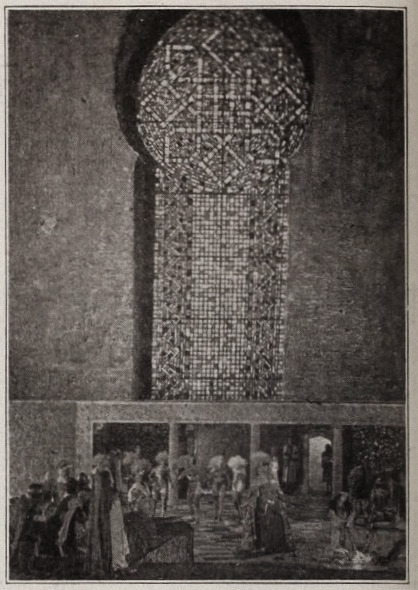
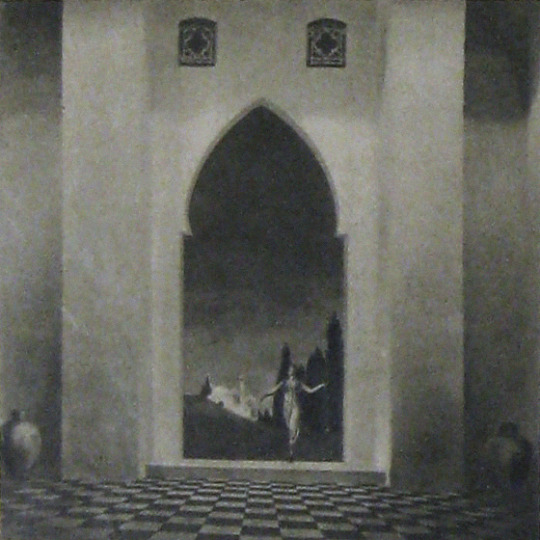
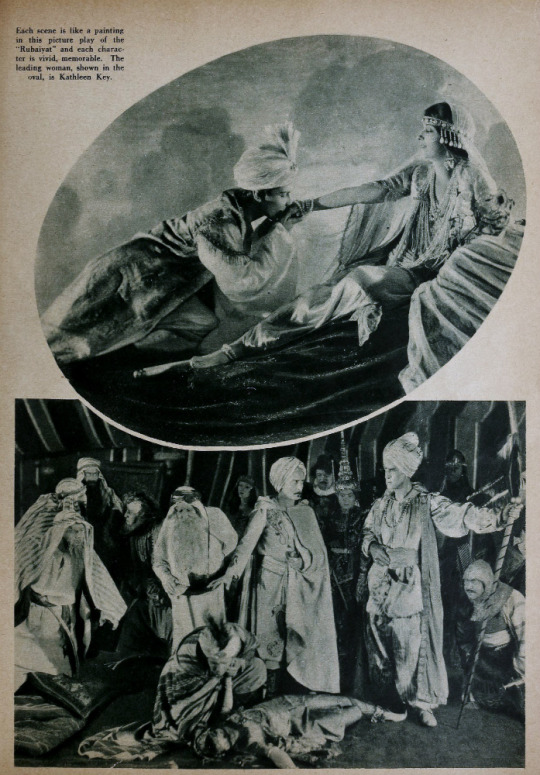
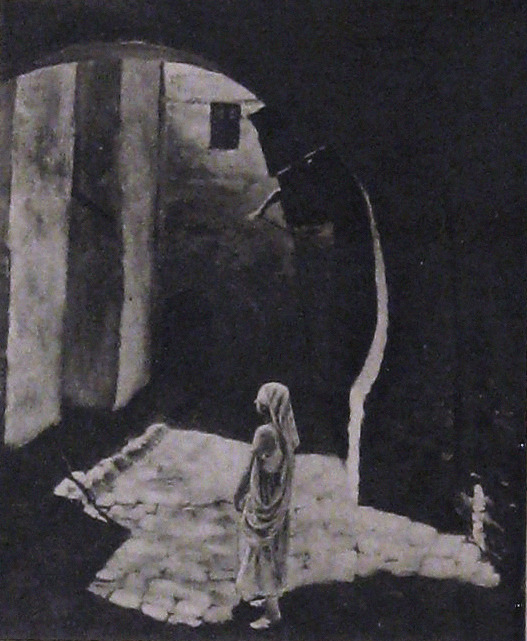

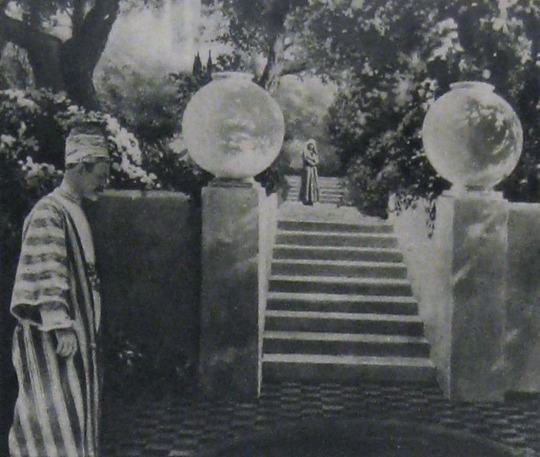
Alternate Titles: The Rubaiyat of Omar Khayyam, The Rubaiyat, Omar Khayyam, Omar
Direction: Ferdinand Pinney Earle; assisted by Walter Mayo
Scenario: Ferdinand P. Earle
Titles: Marion Ainslee, Ferdinand P. Earle (Omar), Louis Weadock (A Lover’s Oath)
Inspired by: The Rubaiyat of Omar Khayyam, as edited & translated by Edward FitzGerald
Production Manager: Winthrop Kelly
Camera: Georges Benoit
Still Photography: Edward S. Curtis
Special Photographic Effects: Ferdinand P. Earle, Gordon Bishop Pollock
Composer: Charles Wakefield Cadman
Editors: Arthur D. Ripley (The Rubaiyat of Omar Khayyam version), Ethel Davey & Ferdinand P. Earle (Omar / Omar Khayyam, the Director’s cut of 1922), Milton Sills (A Lover’s Oath)
Scenic Artists: Frank E. Berier, Xavier Muchado, Anthony Vecchio, Paul Detlefsen, Flora Smith, Jean Little Cyr, Robert Sterner, Ralph Willis
Character Designer: Louis Hels
Choreography: Ramon Novarro (credited as Ramon Samaniegos)
Technical Advisors: Prince Raphael Emmanuel, Reverend Allan Moore, Captain Dudley S. Corlette, & Captain Montlock or Mortlock
Studio: Ferdinand P. Earle Productions / The Rubaiyat, Inc. (Production) & Eastern Film Corporation (Distribution, Omar), Astor Distribution Corporation [States Rights market] (Distribution, A Lover’s Oath)
Performers: Frederick Warde, Edwin Stevens, Hedwiga Reicher, Mariska Aldrich, Paul Weigel, Robert Anderson, Arthur Carewe, Jesse Weldon, Snitz Edwards, Warren Rogers, Ramon Novarro (originally credited as Ramon Samaniegos), Big Jim Marcus, Kathleen Key, Charles A. Post, Phillippe de Lacy, Ferdinand Pinney Earle
Premiere(s): Omar cut: April 1922 The Ambassador Theatre, New York, NY (Preview Screening), 12 October 1923, Loew’s New York, New York, NY (Preview Screening), 2 February 1923, Hoyt’s Theatre, Sydney, Australia (Initial Release)
Status: Presumed lost, save for one 30 second fragment preserved by the Academy Film Archive, and a 2.5 minute fragment preserved by a private collector (Old Films & Stuff)
Length: Omar Khayyam: 8 reels , 76 minutes; A Lover’s Oath: 6 reels, 5,845 feet (though once listed with a runtime of 76 minutes, which doesn’t line up with the stated length of this cut)
Synopsis (synthesized from magazine summaries of the plot):
Omar Khayyam:
Set in 12th century Persia, the story begins with a preface in the youth of Omar Khayyam (Warde). Omar and his friends, Nizam (Weigel) and Hassan (Stevens), make a pact that whichever one of them becomes a success in life first will help out the others. In adulthood, Nizam has become a potentate and has given Omar a position so that he may continue his studies in mathematics and astronomy. Hassan, however, has grown into quite the villain. When he is expelled from the kingdom, he plots to kidnap Shireen (Key), the sheik’s daughter. Shireen is in love with Ali (Novarro). In the end it’s Hassan’s wife (Reicher) who slays the villain then kills herself.
A Lover’s Oath:
The daughter of a sheik, Shireen (Key), is in love with Ali (Novarro), the son of the ruler of a neighboring kingdom. Hassan covets Shireen and plots to kidnap her. Hassan is foiled by his wife. [The Sills’ edit places Ali and Shireen as protagonists, but there was little to no re-shooting done (absolutely none with Key or Novarro). So, most critics note how odd it is that all Ali does in the film is pitch woo, and does not save Shireen himself. This obviously wouldn’t have been an issue in the earlier cut, where Ali is a supporting character, often not even named in summaries and news items. Additional note: Post’s credit changes from “Vizier” to “Commander of the Faithful”]
Additional sequence(s) featured in the film (but I’m not sure where they fit in the continuity):
Celestial sequences featuring stars and planets moving through the cosmos
Angels spinning in a cyclone up to the heavens
A Potters’ shop sequence (relevant to a specific section of the poems)
Harem dance sequence choreographed by Novarro
Locations: palace gardens, street and marketplace scenes, ancient ruins
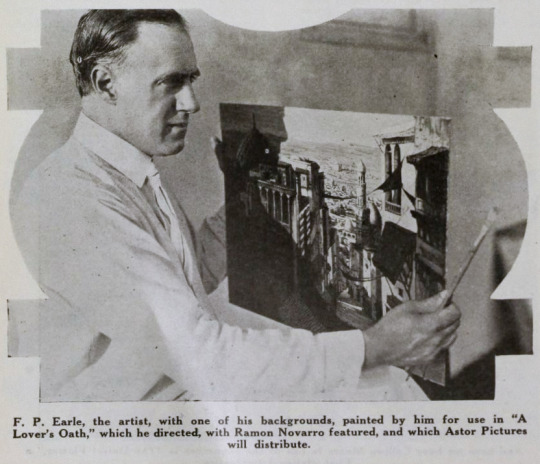
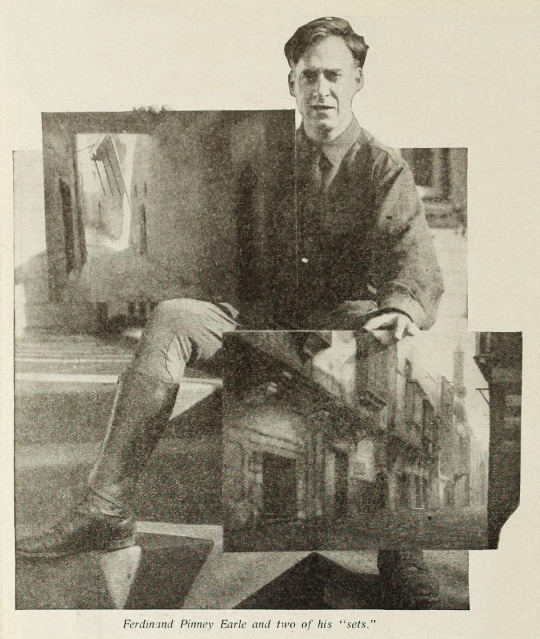
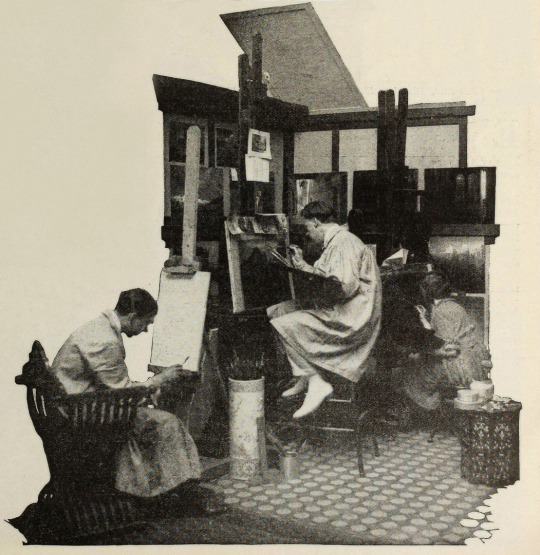


Points of Interest:
“The screen has been described as the last word in realism, but why confine it there? It can also be the last word in imaginative expression.”
Ferdinand P. Earle as quoted in Exhibitors Trade Review, 4 March 1922
The Rubaiyat of Omar Khayyam was a massive best seller. Ferdinand Pinney Earle was a classically trained artist who studied under William-Adolphe Bougueraeu and James McNeill Whistler in his youth. He also had years of experience creating art backgrounds, matte paintings, and art titles for films. Charles Wakefield Cadman was an accomplished composer of songs, operas, and operettas. Georges Benoit and Gordon Pollock were experienced photographic technicians. Edward S. Curtis was a widely renowned still photographer. Ramon Novarro was a name nobody knew yet—but they would soon enough.
When Earle chose The Rubaiyat as the source material for his directorial debut and collected such skilled collaborators, it seemed likely that the resulting film would be a landmark in the art of American cinema. Quite a few people who saw Earle’s Rubaiyat truly thought it would be:
William E. Wing writing for Camera, 9 September 1922, wrote:
“Mr. Earle…came from the world of brush and canvass, to spread his art upon the greater screen. He created a new Rubaiyat with such spiritual colors, that they swayed.” … “It has been my fortune to see some of the most wonderful sets that this Old Earth possesses, but I may truly say that none seized me more suddenly, or broke with greater, sudden inspiration upon the view and the brain, than some of Ferdinand Earle’s backgrounds, in his Rubaiyat. “His vision and inspired art seem to promise something bigger and better for the future screen.”
As quoted in an ad in Film Year Book, 1923:
“Ferdinand Earle has set a new standard of production to live up to.”
Rex Ingram
“Fifty years ahead of the time.”
Marshall Neilan
The film was also listed among Fritz Lang’s Siegfried, Chaplin’s Gold Rush, Fairbanks’ Don Q, Lon Chaney’s Phantom of the Opera and The Unholy Three, and Erich Von Stroheim’s Merry Widow by the National Board of Review as an exceptional film of 1925.
So why don’t we all know about this film? (Spoiler: it’s not just because it’s lost!)
The short answer is that multiple dubious legal challenges arose that prevented Omar’s general release in the US. The long answer follows BELOW THE JUMP!
Earle began the project in earnest in 1919. Committing The Rubaiyat to film was an ambitious undertaking for a first-time director and Earle was striking out at a time when the American film industry was developing an inferiority complex about the level of artistry in their creative output. Earle was one of a number of artists in the film colony who were going independent of the emergent studio system for greater protections of their creative freedoms.
In their adaptation of The Rubaiyat of Omar Khayyam, Earle and Co. hoped to develop new and perfect existing techniques for incorporating live-action performers with paintings and expand the idea of what could be accomplished with photographic effects in filmmaking. The Rubaiyat was an inspired choice. It’s not a narrative, but a collection of poetry. This gave Earle the opportunity to intersperse fantastical, poetic sequences throughout a story set in the lifetime of Omar Khayyam, the credited writer of the poems. In addition to the fantastic, Earle’s team would recreate 12th century Persia for the screen.
Earle was convinced that if his methods were perfected, it wouldn’t matter when or where a scene was set, it would not just be possible but practical to put on film. For The Rubaiyat, the majority of shooting was done against black velvet and various matte photography and multiple exposure techniques were employed to bring a setting 800+ years in the past and 1000s of miles removed to life before a camera in a cottage in Los Angeles.
Note: If you’d like to learn a bit more about how these effects were executed at the time, see the first installment of How’d They Do That.
Unfortunately, the few surviving minutes don’t feature much of this special photography, but what does survive looks exquisite:
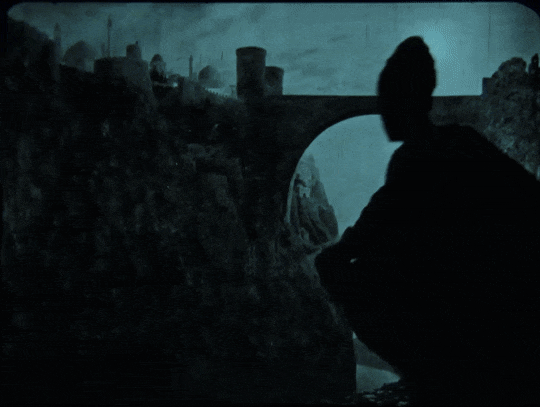
see all gifs here
Earle, knowing that traditional stills could not be taken while filming, brought in Edward S. Curtis. Curtis developed techniques in still photography to replicate the look of the photographic effects used for the film. So, even though the film hasn’t survived, we have some pretty great looking representations of some of the 1000s of missing feet of the film.

Nearly a year before Curtis joined the crew, Earle began collaboration with composer Charles Wakefield Cadman. In another bold creative move, Cadman and Earle worked closely before principal photography began so that the score could inform the construction and rhythm of the film and vice versa.
By the end of 1921 the film was complete. After roughly 9 months and the creation of over 500 paintings, The Rubaiyat was almost ready to meet its public. However, the investors in The Rubaiyat, Inc., the corporation formed by Earle to produce the film, objected to the ample reference to wine drinking (a comical objection if you’ve read the poems) and wanted the roles of the young lovers (played by as yet unknown Ramon Novarro and Kathleen Key) to be expanded. The dispute with Earle became so heated that the financiers absconded with the bulk of the film to New York. Earle filed suit against them in December to prevent them from screening their butchered and incomplete cut. Cadman supported Earle by withholding the use of his score for the film.
Later, Eastern Film Corp. brokered a settlement between the two parties, where Earle would get final cut of the film and Eastern would handle its release. Earle and Eastern agreed to change the title from The Rubaiyat of Omar Khayyam to simply Omar. Omar had its first official preview in New York City. It was tentatively announced that the film would have a wide release in the autumn.
However, before that autumn, director Norman Dawn launched a dubious patent-infringement suit against Earle and others. Dawn claimed that he owned the sole right to use multiple exposures, glass painting for single exposure, and other techniques that involved combining live action with paintings. All the cited techniques had been widespread in the film industry for a decade already and eventually and expectedly Dawn lost the suit. Despite Earle’s victory, the suit effectively put the kibosh on Omar’s release in the US.
Earle moved on to other projects that didn’t come to fruition, like a Theda Bara film and a frankly amazing sounding collaboration with Cadman to craft a silent-film opera of Faust. Omar did finally get a release, albeit only in Australia. Australian news outlets praised the film as highly as those few lucky attendees of the American preview screenings did. The narrative was described as not especially original, but that it was good enough in view of the film’s artistry and its imaginative “visual phenomena” and the precision of its technical achievement.
One reviewer for The Register, Adelaide, SA, wrote:
“It seems almost an impossibility to make a connected story out of the short verse of the Persian of old, yet the producer of this classic of the screen… has succeeded in providing an entertainment that would scarcely have been considered possible. From first to last the story grips with its very dramatic intensity.”
While Omar’s American release was still in limbo, “Ramon Samaniegos” made a huge impression in Rex Ingram’s Prisoner of Zenda (1922, extant) and Scaramouche (1923, extant) and took on a new name: Ramon Novarro. Excitement was mounting for Novarro’s next big role as the lead in the epic Ben-Hur (1925, extant) and the Omar project was re-vivified.
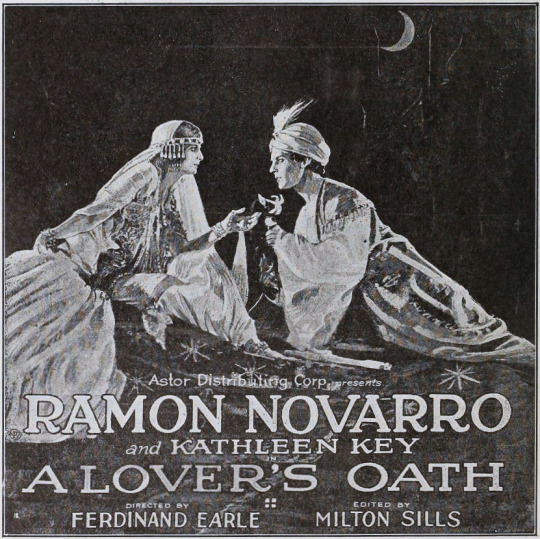
A new company, Astor Distribution Corp., was formed and purchased the distribution rights to Omar. Astor hired actor (note, not an editor) Milton Sills to re-cut the film to make Novarro and Key more prominent. The company also re-wrote the intertitles, reduced the films runtime by more than ten minutes, and renamed the film A Lover’s Oath. Earle had moved on by this point, vowing to never direct again. In fact, Earle was indirectly working with Novarro and Key again at the time, as an art director on Ben-Hur!
Despite Omar’s seemingly auspicious start in 1920, it was only released in the US on the states rights market as a cash-in on the success of one of its actors in a re-cut form five years later.
That said, A Lover’s Oath still received some good reviews from those who did manage to see it. Most of the negative criticism went to the story, intertitles, and Sills’ editing.
What kind of legacy could/should Omar have had? I’m obviously limited in my speculation by the fact that the film is lost, but there are a few key facts about the film’s production, release, and timing to consider.
The production budget was stated to be $174,735. That is equivalent to $3,246,994.83 in 2024 dollars. That is a lot of money, but since the production was years long and Omar was a period film set in a remote locale and features fantastical special effects sequences, it’s a modest budget. For contemporary perspective, Robin Hood (1922, extant) cost just under a million dollars to produce and Thief of Bagdad (1924, extant) cost over a million. For a film similarly steeped in spectacle to have nearly 1/10th of the budget is really very noteworthy. And, perhaps if the film had ever had a proper release in the US—in Earle’s intended form (that is to say, not the Sills cut)—Omar may have made as big of a splash as other epics.
It’s worth noting here however that there are a number of instances in contemporary trade and fan magazines where journalists off-handedly make this filmmaking experiment about undermining union workers. Essentially implying that that value of Earle’s method would be to continue production when unionized workers were striking. I’m sure that that would absolutely be a primary thought for studio heads, but it certainly wasn’t Earle’s motivation. Often when Earle talks about the method, he focuses on being able to film things that were previously impossible or impracticable to film. Driving down filming costs from Earle’s perspective was more about highlighting the artistry of his own specialty in lieu of other, more demanding and time-consuming approaches, like location shooting.
This divide between artists and studio decision makers is still at issue in the American film and television industry. Studio heads with billion dollar salaries constantly try to subvert unions of skilled professionals by pursuing (as yet) non-unionized labor. The technical developments of the past century have made Earle’s approach easier to implement. However, just because you don’t have to do quite as much math, or time an actor’s movements to a metronome, does not mean that filming a combination of painted/animated and live-action elements does not involve skilled labor.
VFX artists and animators are underappreciated and underpaid. In every new movie or TV show you watch there’s scads of VFX work done even in films/shows that have mundane, realistic settings. So, if you love a film or TV show, take the effort to appreciate the work of the humans who made it, even if their work was so good you didn’t notice it was done. And, if you’ve somehow read this far, and are so out of the loop about modern filmmaking, Disney’s “live-action” remakes are animated films, but they’ve just finagled ways to circumvent unions and low-key delegitimize the skilled labor of VFX artists and animators in the eyes of the viewing public. Don’t fall for it.
VFX workers in North America have a union under IATSE, but it’s still developing as a union and Marvel & Disney workers only voted to unionize in the autumn of 2023. The Animation Guild (TAG), also under the IATSE umbrella, has a longer history, but it’s been growing rapidly in the past year. A strike might be upcoming this year for TAG, so keep an eye out and remember to support striking workers and don’t cross picket lines, be they physical or digital!
Speaking of artistry over cost-cutting, I began this post with a mention that in the early 1920s, the American film industry was developing an inferiority complex in regard to its own artistry. This was in comparison to the European industries, Germany’s being the largest at the time. It’s frustrating to look back at this period and see acceptance of the opinion that American filmmakers weren’t bringing art to film. While yes, the emergent studio system was highly capitalistic and commercial, that does not mean the American industry was devoid of home-grown artists.
United Artists was formed in 1919 by Douglas Fairbanks, Charlie Chaplin, Mary Pickford, and D.W. Griffith precisely because studios were holding them back from investing in their art—within the same year that Earle began his Omar project. While salaries and unforgiving production schedules were also paramount concerns in the filmmakers going independent, a primary impetus was that production/distribution heads exhibited too much control over what the artists were trying to create.
Fairbanks was quickly expanding his repertoire in a more classical and fantastic direction. Cecil B. DeMille made his first in a long and very successful string of ancient epics. And the foreign-born children of the American film industry, Charlie Chaplin, Rex Ingram, and Nazimova, were poppin’ off! Chaplin was redefining comedic filmmaking. Ingram was redefining epics. Nazimova independently produced what is often regarded as America’s first art film, Salome (1923, extant), a film designed by Natacha Rambova, who was *gasp* American. Earle and his brother, William, had ambitious artistic visions of what could be done in the American industry and they also had to self-produce to get their work done.
Meanwhile, studio heads, instead of investing in the artists they already had contracts with, tried to poach talent from Europe with mixed success (in this period, see: Ernst Lubitsch, F.W. Murnau, Benjamin Christensen, Mauritz Stiller, Victor Sjöström, and so on). I’m in no way saying it was the wrong call to sign these artists, but all of these filmmakers, even if they found success in America, had stories of being hired to inject the style and artistry that they developed in Europe into American cinema, and then had their plans shot down or cut down to a shadow of their creative vision. Even Stiller, who tragically died before he had the opportunity to establish himself in the US, faced this on his first American film, The Temptress (1926, extant), on which he was replaced. Essentially, the studio heads’ actions were all hot air and spite for the filmmakers who’d gone independent.

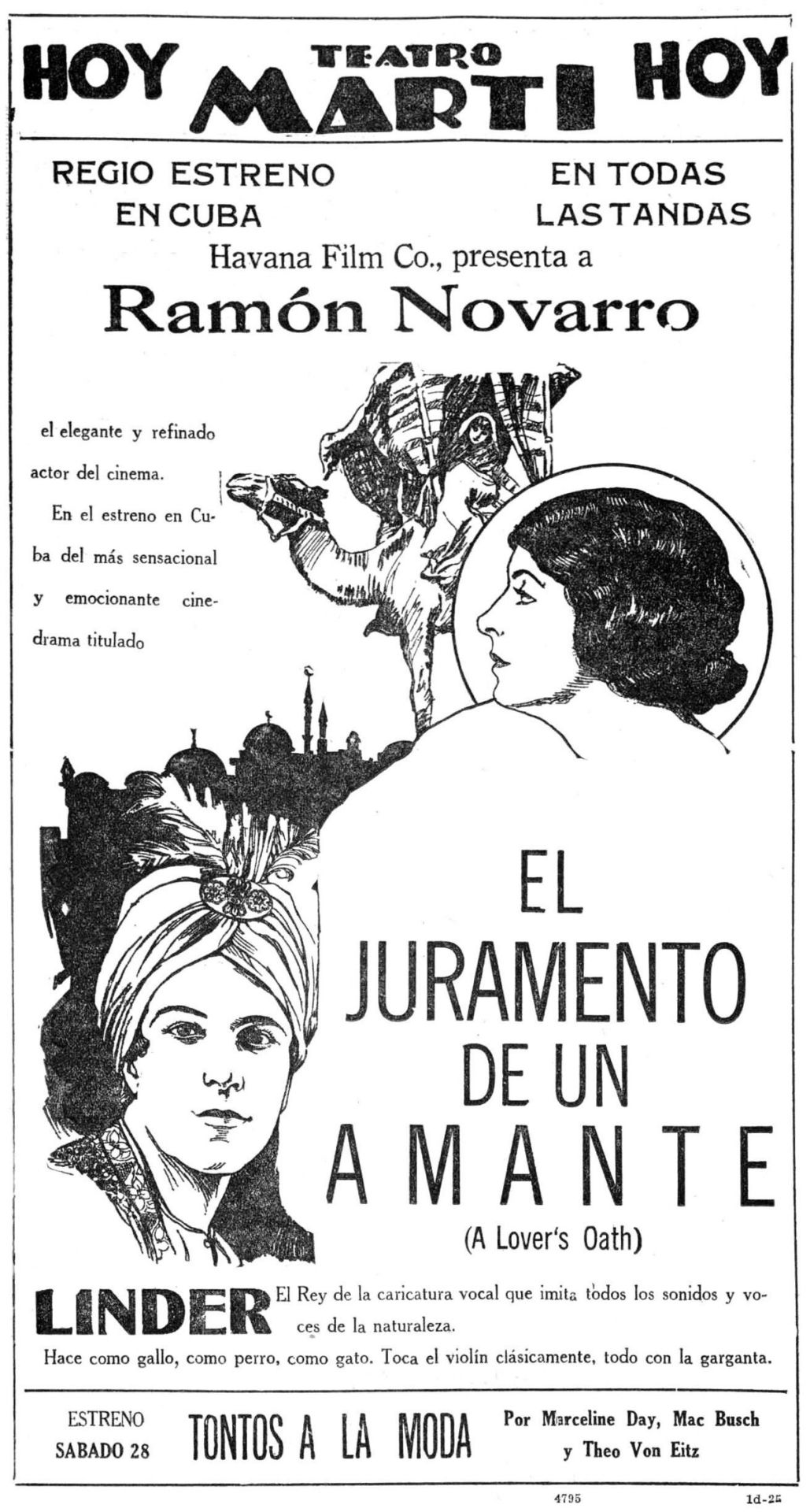
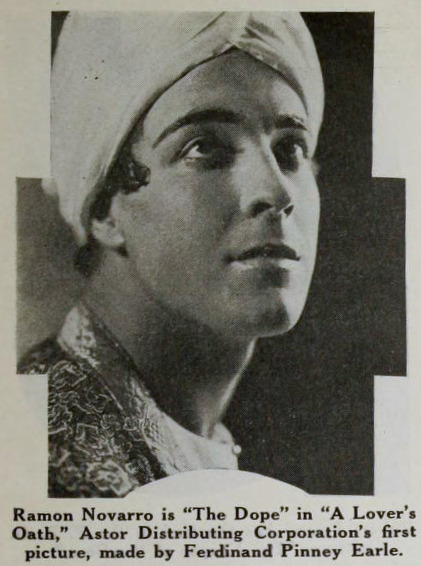
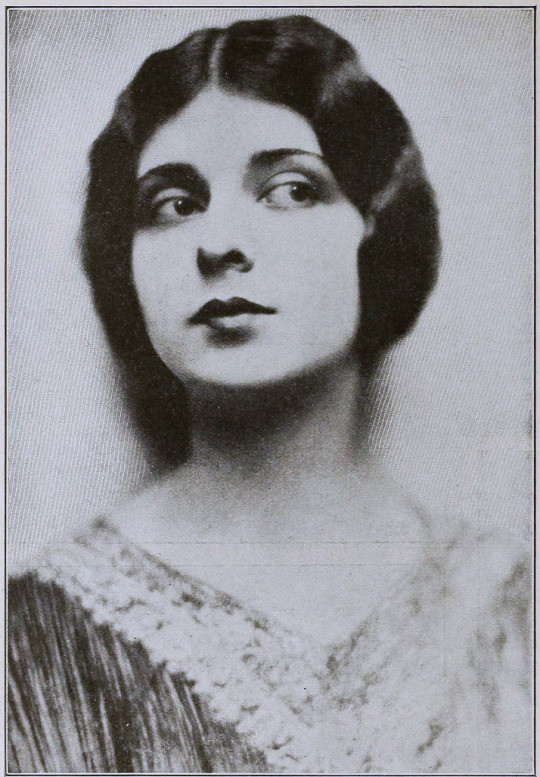
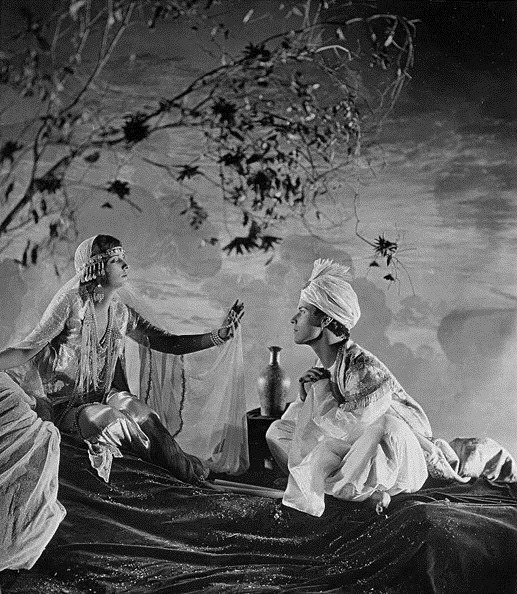
Finally I would like to highlight Ferdinand Earle’s statement to the industry, which he penned for from Camera in 14 January 1922, when his financial backers kidnapped his film to re-edit it on their terms:
MAGNA CHARTA
Until screen authors and producers obtain a charter specifying and guaranteeing their privileges and rights, the great slaughter of unprotected motion picture dramas will go merrily on.
Some of us who are half artists and half fighters and who are ready to expend ninety per cent of our energy in order to win the freedom to devote the remaining ten per cent to creative work on the screen, manage to bring to birth a piteous, half-starved art progeny.
The creative artist today labors without the stimulus of a public eager for his product, labors without the artistic momentum that fires the artist’s imagination and spurs his efforts as in any great art era.
Nowadays the taint of commercialism infects the seven arts, and the art pioneer meets with constant petty worries and handicaps.
Only once in a blue moon, in this matter-of-fact, dollar-wise age can the believer in better pictures hope to participate in a truely [sic] artistic treat.
In the seven years I have devoted to the screen, I have witnessed many splendid photodramas ruined by intruding upstarts and stubborn imbeciles. And I determined not to launch the production of my Opus No. 1 until I had adequately protected myself against all the usual evils of the way, especially as I was to make an entirely new type of picture.
In order that my film verison [sic] of the Rubaiyat of Omar Khayyam might be produced under ideal conditions and safeguarded from intolerable interferences and outside worries, I entered into a contract with the Rubaiyat, Inc., that made me not only president of the corporation and on the board of directors, but which set forth that I was to be author, production manager, director, cutter and film editor as well as art director, and that no charge could be made against the production without my written consent, and that my word was to be final on all matters of production. The late George Loane Tucker helped my attorney word the contract, which read like a splendid document.
Alas, I am now told that only by keeping title to a production until it is declared by yourself to be completed is it safe for a scenario writer, an actor or a director, who is supposedly making his own productions, to contract with a corporation; otherwise he is merely the servant of that corporation, subject at any moment to discharge, with the dubious redress of a suit for damages that can with difficulty be estimated and proven.
Can there be any hope of better pictures as long as contracts and copyrights are no protection against financial brigands and bullies?
We have scarcely emerged from barbarism, for contracts, solemnly drawn up between human beings, in which the purposes are set forth in the King’s plainest English, serve only as hurdles over which justice-mocking financiers and their nimble attorneys travel with impunity, riding rough shod over the author or artist who cannot support a legal army to defend his rights. The phrase is passed about that no contract is invioliable [sic]—and yet we think we have reached a state of civilization!
The suit begun by my attorneys in the federal courts to prevent the present hashed and incomplete version of my story from being released and exhibited, may be of interest to screen writers. For the whole struggle revolves not in the slightest degree around the sanctity of the contract, but centers around the federal copyright of my story which I never transferred in writing otherwise, and which is being brazenly ignored.
Imagine my production without pictorial titles: and imagine “The Rubaiyat” with a spoken title as follows, “That bird is getting to talk too much!”—beside some of the immortal quatrains of Fitzgerald!
One weapon, fortunately, remains for the militant art creator, when all is gone save his dignity and his sense of humor; and that is the rapier blade of ridicule, that can send lumbering to his retreat the most brutal and elephant-hided lord of finance.
How edifying—the tableau of the man of millions playing legal pranks upon men such as Charles Wakefield Cadman, Edward S. Curtis and myself and others who were associated in the bloody venture of picturizing the Rubaiyat! It has been gratifying to find the press of the whole country ready to champion the artist’s cause.
When the artist forges his plowshare into a sword, so to speak, he does not always put up a mean fight.
What publisher would dare to rewrite a sonnet of John Keats or alter one chord of a Chopin ballade?
Creative art of a high order will become possible on the screen only when the rights of established, independent screen producers, such as Rex Ingram and Maurice Tourneur, are no longer interferred with and their work no longer mutilated or changed or added to by vandal hands. And art dramas, conceived and executed by masters of screen craft, cannot be turned out like sausages made by factory hands. A flavor of individuality and distinction of style cannot be preserved in machine-made melodramas—a drama that is passed from hand to hand and concocted by patchworkers and tinkerers.
A thousand times no! For it will always be cousin to the sausage, and be like all other—sausages.
The scenes of a master’s drama may have a subtle pictorial continuity and a power of suggestion quite like a melody that is lost when just one note is changed. And the public is the only test of what is eternally true or false. What right have two or three people to deprive millions of art lovers of enjoying an artist’s creation as it emerged from his workshop?
“The Rubaiyat” was my first picture and produced in spite of continual and infernal interferences. It has taught me several sad lessons, which I have endeavored in the above paragraphs to pass on to some of my fellow sufferers. It is the hope that I am fighting, to a certain extent, their battle that has given me the courage to continue, and that has prompted me to write this article. May such hubbubs eventually teach or inforce a decent regard for the rights of authors and directors and tend to make the existence of screen artisans more secure and soothing to the nerves.
FERDINAND EARLE.
---
☕Appreciate my work? Buy me a coffee! ☕
Transcribed Sources & Annotations over on the WMM Blog!
See the Timeline for Ferdinand P. Earle's Rubaiyat Adaptation
#1920s#1923#1925#omar khayyam#ferdinand pinney earle#ramon novarro#independent film#american film#silent cinema#silent era#silent film#classic cinema#classic movies#classic film#film history#history#Charles Wakefield Cadman#cinematography#The Rubaiyat#cinema#film#lost film
52 notes
·
View notes
Text
Okay @scarlet-bitch (hope you don’t mind the tag) this is the very basic like timeline of that thing I mentioned. It’s a super crossover xD
—//—//—//—
1917
James “Bucky” Barnes is born March 10
Howard Stark is born August 15
1918
Steve Rogers is born July 4
1921
Margaret “Peggy” Carter is born April 21
1930
Eric Lehnsherr is born May 25
1932
Charles Xavier is born July 13
1939
Howard Stark starts up Stark Industries
1950
Nick Fury is born July 4
1954
John Winchester is born April 22
Mary Winchester is born December 4
1956
David Rossi is born May 9
1958
Henry Winchester stumbles upon a mutant/human co-op trying to force mutations in humans. He is saved by an undercover CIA agent and forced into Witness Protection without his wife and child. The CIA agent has betrayed the CIA and is instead working with the co-op.
The CIA agent, calling herself Abbadon, starts to subtly threaten Millie.
1960
Harold Finch (Thomas) is born April 9
1962
Abbadon injects John with a prototype serum that is supposed to force a mutation out of him. It seems to fail.
Nathan Ingram is born June 6
Olivia Manx is born July 5
1964
Phil Coulson is born July 8
1965
Abbadon scares Millie, who believes that she has hidden John’s existence from Abbadon as the ex-CIA agent never threatens him, away. Millie leaves John with her sister Maisy. She takes on the name Maria.
Millie meets and falls in love with Howard Stark.
Nathan Ford is born August 16
Carl Elias is born August 18
1966
Robert Hersh is born May 7
Mark Snow is born May 22
1967
Anthony Marconi is born November 23
1968
Lionel Fusco is born March 17
James “Rhodey” Rhodes is born October 6
1969
Bruce Banner is born December 18
1970
Tony Stark is born May 29
Emily Prentiss is born October 12
1971
Clint Barton is born June 18
Aaron Hotchner is born November 2
1972
Joycelyn Carter is born March 7
Haley Hotchner is born July 16
1973
Derek Morgan is born June 6
1974
Pepper Potts is born February 12
1975
John Reese (Harris) is born May 4
1977
Elle Greenaway is born June 24
Penelope Garcia is born July 7
1978
Sam Wilson is born September 23
1979
Dean Winchester is born January 24
1981
Samantha Groves is born September 4
Sean Hotchner is born August 7
Spencer Reid is born October 28
1982
Maria Hill is born April 4
1983
Grant Ward is born January 7
Sam Winchester is born May 2
Nathan Ingram leaves MIT with an unfinished degree to start IFT May 29
Michael Cole is born July 10
Sameen Shaw is born October 25
Mary Winchester dies November 2
1984
Jessica Moore is born January 24
Will Ingram Finch is born August 31
Natasha Romanov is born November 20
1985
Devon Grice is born November 30
1986
Alec Hardison is born April 13
Dum E is created June 18
1987
Tony graduates from MIT June 5
Leo Fitz is born August 19
Jemma Simmons is born September 11
1988
Skye (Daisy Johnson) is born July 2
1989
This is the last year that Millie Winchester was seen alive. This is because she abandons the name and steps fully into her Maria Stark alias.
Pietro & Wanda Maximoff are born January 1
1990
Adam Milligan is born September 29
1991
Maria and Howard Stark die December 16
1992
Theresa Whitaker is born March 7
John Winchester drops his sons off with his half brother Tony Stark April 20
July 20 Tony manages to gain custody of his nephews.
1993
John Winchester suffers a mental break and kills Kate Milligan and kidnaps his son on October 3
October 11 Adam is dropped of with Tony which causes a scandal
1995
Caleb Phipps is born July 26
1997
Taylor Carter is born June 18
1999
Masha Ingram-Finch is born February 24
2000
Lee Fusco is born January 9
2001
Peter Parker is born August 10
2003
Genrika Zhirova is born December 13
2004
Lionel and his wife divorce
2005
Jack Hotchner is born October 7
“The Machine” goes online February and the next day sold.
2007
On February 5 Tobias Hankel kidnaps Spencer Reid.
2008
Henry LaMontagne is born November 12
2009
Tony is kidnapped by 10 Rings February 13
2010
The Ferry bombing happens killing Nathan Ingram September 26
Sometime during October or November Rick Dillinger is hired by Finch
Dillinger dies December 5ish
2012
May 4; Battle of New York happens.
#inkstained rambles#marvel cinematic universe#person of interest#criminal minds#super crossover#the supernatural are mutants
16 notes
·
View notes
Photo

basicallyanotherwitchesthing Vincent P. Miceli - Women Priests & Other Fantasies - The Christopher Publishing House - 1985 (cover design by Robert E. Ward)
14 notes
·
View notes
Text

Curiosità su Julia Roberts e Richard Gere in Pretty Woman 🎬
Ruoli invertiti: Richard Gere inizialmente rifiutò più volte il ruolo di Edward Lewis. Solo dopo che Julia Roberts lo convinse durante un incontro, accettò finalmente la parte.
Cambio di titolo: Il film era originariamente intitolato "3000", in riferimento alla somma di denaro che Vivian (Julia Roberts) riceveva per la settimana. Il titolo venne cambiato in "Pretty Woman" ispirato alla canzone di Roy Orbison, che divenne un elemento distintivo del film.
Scena improvvisata: Una delle scene più iconiche del film, in cui Edward chiude bruscamente la scatola di gioielli sulle dita di Vivian facendola ridere, fu improvvisata. La reazione di Julia Roberts era autentica, e il regista Garry Marshall amò così tanto quel momento che decise di mantenerlo nel film.
Casting di Julia Roberts: Julia Roberts non fu la prima scelta per il ruolo di Vivian Ward. Molte attrici, tra cui Molly Ringwald, Meg Ryan e Daryl Hannah, rifiutarono la parte prima che venisse scelta Roberts. Questo ruolo fu la sua grande svolta, catapultandola verso la celebrità.
Scena delle scarpe: La scena in cui Edward mette la scarpa a Vivian fu un'idea di Richard Gere, improvvisata sul momento. Divenne uno dei momenti più memorabili del film.
Alchimia reale: La chimica tra Roberts e Gere era così forte che ebbe un ruolo significativo nel successo del film. La loro connessione sullo schermo rese la trama romantica più credibile e affascinante.
Performance al pianoforte di Richard Gere: Richard Gere compose e suonò realmente il pezzo al pianoforte presente nella scena dell’hotel. Questo aggiunse un tocco personale alla sua interpretazione, mostrando anche il suo talento musicale.
L’iconico abito rosso: Il famoso abito rosso indossato da Julia Roberts nella scena dell'opera rischiava di non essere creato. Inizialmente, l'abito era stato disegnato in nero, ma la costumista Marilyn Vance decise di cambiarlo in rosso all'ultimo minuto, creando uno dei momenti di moda più iconici nella storia del cinema.
Collaborazione di successo: Pretty Woman segnò l'inizio di una collaborazione di successo tra Roberts, Gere e il regista Garry Marshall. Il trio si riunì nel 1999 per il film Se scappi, ti sposo, che ebbe anch'esso un grande successo al botteghino.
Un successo al botteghino: Pretty Woman fu un enorme successo, incassando oltre 463 milioni di dollari in tutto il mondo. Divenne una delle commedie romantiche di maggior incasso di tutti i tempi, consacrando Julia Roberts come una delle attrici più richieste e Richard Gere come protagonista di spicco a Hollywood.
Crediti: Light Of Rumi / Betty Nurbaety
13 notes
·
View notes
Text
Smoky Mountain Wrestling - February 1, 1992 - The First Show!
Ahhh, yes. The very first official episode of Smoky Mountain Wrestling -- the brainchild of our favorite tennis racket wielding king of chaos himself, Jim Cornette. Born out of a burning desire to bring old-school wrestling back to the forefront, SMW was gritty, Southern, unapologetically loud, and packed to the brim with big personalities, violent feuds, and enough wild promos to fill a Waffle House after midnight.
This wasn't Vince's cartoon circus, or Turner's corporate cash splash -- this was territory wrestling, reborn in the Appalachian hills with Corny steering the wheel and screaming into the void.
And now, I'm diving in headfirst, beginning right here with Episode 1, aired February 1, 1992. I was only 2 years old at the time. 😯 But, pay attention, because the copyright date at the end? 1991. It seems these early shows may have been taped in 1991... which means we're actually staring at the true genesis of SMW. A time capsule of Cornette's dream.
So grab a Moon Pie, pour a Cheerwine, and get ready to fangirl, thirst, and possibly yell at your screen. Because today... we're goin' back to Greenville, South Carolina and the Memorial Auditorium. It's time to revisit the chaos, the unintentional comedy, and the carnage that is Smoky Mountain Wrestling.
Let's hit play on history.
Fun Fact: The Memorial Auditorium no longer exists. :( It was located at 401 E North Street, Greenville, South Carolina. This is what it looked like, if you're curious.

It closed August 30, 1996, and was demolished September 20, 1997. This is the site today (well, March 2025), courtesy of Google Earth:

Anyway, enough trivia -- let's get to the wrestling before I start telling you what everyone smelled like in the building (spoiler: most likely gym socks and Slim Jims).
We kick things off with Bob Caudle welcoming us to the premiere episode of Smoky Mountain Wrestling with the legendary tagline: "Professional wrestling the way it used to be, and the way you like it." Hell yeah, brother. No flippy indie nonsense here -- just classic rasslin', sweet Southern drama, and yes, my pookiebear Jim Cornette swinging a tennis racket like a medieval warlord.
Bob runs down the card, saying we'll get appearances from "White Lightning" Tim Horner (yay...), the Fantastics (more mullets than you can shake a steel chair at), "Prime Time" Brian Lee (Dutch's face says "ehhh"), and the mysterious Black Scorpion (who?). He also says we're getting to hear from two managers: Ron Ward, and my sweet pookiebear, Jim Cornette. Also Commissioner Bob Armstrong will make an appearance -- so we're legally obligated to pretend we trust authority for a minute. 😉 The main even t is going to be Bobby Fulton of the Fantastics taking on "The Russian Bear" Ivan Koloff -- or as I call him, "Certified Soviet Daddy". Hell yeah, brother.
Dutch Mantell chimes in and he's mostly just here to see Koloff wreck people. Same, Dutch. Same. He's also curious to see what Brian Lee's about to bring to the table. (Spoiler alert: it's tallness and not much else.)
We're heading to the ring for the first match of the night, Killer Kyle vs. Robert Gibson. The crowd is... sedated. Did someone hotbox the auditorium with melatonin? They perk up a bit when Gibson comes out, but it's giving "high school pep rally during flu season" vibes.
The match begins and we can't really hear the commentary, which sucks, but audio issues happen. 😅 Killer Kyle yells at some fans, and tells them to shut up, lmao. They're cheering for Robert Gibson, obvs. Bob and Dutch are discussing what's in Killer Kyle's violin case, and I'm just here like "A violin, I hope." 🤣
There's a series of headlocks and shoulder tackles between the two that screams "we practiced this six times in the parking lot." Gibson finally hits a nice hip toss, and Kyle immediately tattles to the ref, claiming his tights were pulled. Or that he got a wedgie. Honestly, same energy.
There's an awkward and funny moment where they bump into each other like two Sims who can't pathfind, and just stare at each other:
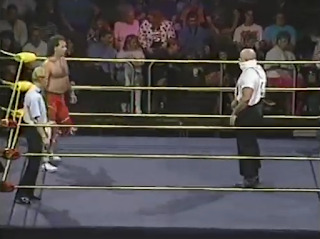
Gibson manages to land a proper shoulder block, but shortly after, he tries a shoulder strike in the corner and goes splat right into the turnbuckle like Wile E. Coyote.
Kyle zones in on that shoulder like it owes him money. Rope work, punches, torque -- you name it. Gibson is trying to fight out of it, but Killer Kyle's a big dude.
Kyle goes for a pin, but only gets a count of one.
On commentary, Dutch says the Rock 'n' Roll Express released an album once and it went plywood within the first three weeks, and sold an excess of 75 copies, and it was on the verge of becoming sheet rock. 🤣🤣🤣 I'm howling.
Killer Kyle whips Robert Gibson into the corner, goes to run shoulder-first at him, but Gibson moves, Kyle misses, and Gibson gets him in a roll-up pin... 1, 2, 3!
Winner: Robert Gibson via pinfall.
Not a bad match. I give it 3/5 stars. Killer Kyle isn't bad in ring, Gibson is pretty good too. Dutch's snark alone carried the segment. Bonus points for me spotting the exact moment Killer Kyle realized he wasn't winning. 🤣
Now it's time for a word from The Fantastics aboout their main event match, which confuses the hell out of me, because I thought the main event was Bobby Fulton vs. Ivan Koloff -- not both Fantastics. Did Bob Caudle misspeak? Yes. Yes, he did. (Classic Bob. We love you anyway.)
Jackie Fulton pipes up first in this segment, with all the charisma of a wet paper towel. He says, "It's a pleasure to be here in Smoky Mountain Wrestling, and today, my brother's going to be in the main event."
Wow, Jackie. Try not to overexert yourself there. That line had all the emotional range of someone reading a weather report. (Bobby, blink twice if you're being held hostage by your brother.)
Thankfully, Bobby Fulton has slightly more enthusiasm. He's cutting a promo on Ivan Koloff, and says Koloff better be ready for the "fight of his life". Bold words, Bobby. But respectfully, Ivan could probably crush you with one Soviet hug. Just saying.
The on-screen graphic tells us we're about to see "Prime Time" Brian Lee next...
....but instead we cut back to Bob and Dutch at the commentary desk, and Dutch is gnawing on an ink pen like he's one bad booking decision away from snapping. Bob informs us that earlier today, he interviewed Commissioner Bob Armstrong to hear about all his brilliant ideas for what's going to make SMW great.
Dutch's face is SCREAMING "I call bullshit," but he's polite enough to keep it to himself and not start heckling yet.
Caudle hits us with "We know you'll be interested in hearing that." and Dutch makes this face like, "Who? Me? I'd rather chew glass."
Now we head to Bob Caudle interviewing Commissioner Bob Armstrong -- aka "The Bullet", aka Road Dogg's dad, aka the man who's ready to bring law, order, and Southern grandpa energy to SMW.
Caudle sets him up by saying Armstrong has over 30 years of experience in the business (which is true -- Bob's been around the block and the ring), and asks him what we can expect from him as commissioner.
Bob Armstrong is all business. He says he's had every trick in the book tried on him, that wrestling's been good to him and his family, but the way things have been going lately? He ain't thrilled. He saw SMW as the perfect opportunity to return wrestling to the people -- the way it used to be, and affordable.
He promises wrestling will be treated like a sport again while he's in charge, and baby, he is not playing around. Fines for breaking the rules will be heavy. So if you think you're going to toss someone over the top rope (?), sneak in a foreign object (...I fear what this means for tennis rackets), or put your hands on the ref, you better think again.
(Something tells me Corny and his teams will rack up more fines than a speeding ticket in Georgia.)
Armstrong then encourages the fans to send letters telling SMW what they want to see. Fan participation! We love to see it!
He closes by saying SMW is going to be the best.
And spoiler alert: it was. 💔
We cut to the ring for our second match of the night, and it's the King of Self-Appreciation, Barry Horowitz vs. tall, tan-ish, and television-ready "Prime Time" Brian Lee. This is Lee's debut match in SMW -- at least televised -- so someone back there clearly said, "Let's throw him in with Barry. That guy could carry a shopping cart to a decent match." Spoiler alert: Barry does not disappoint.
We start with a classic collar-and-elbow tie-up and some good old-fashioned arm-wrenching -- a rite of passage in wrestling. Horowitz tries to return the favor, but Lee's like "nah," and shows him what a proper arm wringer feels like. Barry escapes with an elbow to the face, because why not go straight for the jaw?
We get a few crisscross rope runs that look like a confused game of Leapfrog Tag, but Lee eventually grounds Barry with a hip toss and settles into an armbar. Work that limb, big guy. Barry tries to kick free, and finally gets to his feet to deliver some gut shots and a clothesline that rattles Lee. Barry takes a moment to give himself a pat on the back, as is tradition.
Back in control, Horowitz hits a swinging neckbreaker and a leg drop into a pin -- only gets a one count, but he's putting in the effort! He's feeling it. He's also choking Brian Lee in the corner with his boot, but hey, we don't judge here. Kinky.
Anyway, Horowitz goes for a pin and gets a two-count. He gets up and stomps on Lee's hand and dropkicks him 🤣 Lee goes into the corner, and Horowitz hits him with a snapmare, before hitting him with a running snapmare. That looks like it hurts.
Lee battles back again with a few punches, but Horowitz gives him a couple of punches in return, and hits him with yet another snapmare. He rolls him up for a pin, but Lee kicks out at two.
Dutch states he's already decided he doesn't like Brian Lee. Doesn't know what it is about him, but he doesn't like him 🤣 Dutch, my dude, same energy as when your bestie starts dating someone new and you just know something's off.
Horowitz continues to dominate for longer than anyone probably expected. He goes for another dropkick, but Lee grabs the ropes and lets Barry dropkick air. He crashes and burns like a Looney Tune. Lee's had enough and goes full rage on him now.
Lee lays in some stiff-looking shots, whips Barry to the corner, and gives him a back toss so high the FAA had to approve it. Then he whips him off the ropes and hits a big clothesline.
The finish comes when Lee picks Horowitz up for what looks like is gonna be the Razor's Edge -- but no! It's a nasty backbreaker, and that's all she wrote! 1, 2, 3!
Winner: "Prime Time" Brian Lee via pinfall
Decent match, I'll give it another 3/5 stars. I liked how Horowitz wasn't treated like a joke to be squashed in a squash match, which happened a lot in his WWF run.
Next, the on-screen graphic says "White Lightining" strikes, and that can only mean one thing... Tim Horner is inbound. (Yay?) But hold up, before we get to the bleach-blonde buzzkill, Bob Caudle informs us that we're going to hear from the legendary wrestling great, Ron Wright.
We cut to ol' Ron, sitting in his wheelchair, and right away I want to give him a hug and a glass of sweet tea. This man sounds exactly like one of those Southern uncles you only see at holidays who starts every sentence with "Now, listen here, young'un..."
Ron opens with a kind "It certainly is nice to be in Smoky Mountain Wrestling," and I swear I heard banjo music and the smell of biscuits filled the air. He then states that the reason he's in the wheelchair is because his rasslin' career took a toll on him. Bless him. Rasslin'. Not wrestling. Rasslin'.
He goes on to explain that he needs knee and hip surgery, and he wants to make some money. He's looking to manage someone and make that money, so he can get that surgery. Honestly? King behavior. Hustle, grind, conquer.
Ron ends his segment by declaring that he's going to take a wrestler to the top of the SMW empire, and I believe him. He's giving "sweet old grandpa with a steel pipe hidden in the back of his wheelchair" energy, and I am so here for whatever mess he brings.
We cut back to the ring, and "Golden Boy" Joe Cazana is already there and waiting for his opponent. Oh lord, it's time... it's Tim Horner time. That's right -- the man, the myth, the babyface who's always ten seconds from losing me to a nap: "White Lightnin'" Tim Horner.
Now, his entrance music? "Thunder Rolls" by Garth Brooks. You know what? Respect. I may be a nu-metal loving chaos gremlin, but I have Appalachian roots and an undying fondness for '90s country. That song slaps.
Bob Caudle is trying his best, but bless his heart, he calls him "White Lightning Tim Lightining". I spit out my drink. Even Bob knows that was a mess, and says "I had lightning in there twice, didn't I, Dutch?" Dutch says absolutely nothing, and I feel like he's silently judging. 🤣
Anyway, we've got Joe Cazana -- as I said previously, billed as the "Golden Boy", though with that name I expected a guy who would pull gold chains out of his boots and cheat like hell. Instead, he ties up with Horner and immediately ends up on the mat like he just slipped on a banana peel.
Dutch gives us a quick lore drop -- apparently Joe Cazana's grandpa was a wrestling promoter, which is cool, but all I'm thinking is "your grandpa's rolling in his grave watching you get flung around like a sack of potatoes." That is, assuming Cazana's grandpa is not on the mortal plane. If he is still at that time, then he's just watching with disappointment.
Horner tries a quick pin combo out of a headlock but only gets two. he continues the headlock and Cazana graps Horner's hair in desperation like a kid hanging on to the last donut. The ref comes over like "You tappin', bro?" and Cazana shouts "NO!" with the energy of someone refusing to admit they just stubbed their toe.
Cazana gets to his feet and backs Horner in a corner (heh, it rhymes) and forces him to break the headlock. He gets Horner with a blow to the midsection and one to the face. Cazana whips him to the opposite corner, but Horner hops up on the top rope and jumps over Cazana when he runs over there, and then hip tosses Cazana. He dropkicks him and hits him with another hip toss when he gets to his feet. Horner then puts Cazana in an armbar submission. Cazana manages somehow to get to his feet and puts Horner in a headlock.
They bounce off the ropes and Horner uses a leg takedown on Cazana, and then puts him in another submission hold. Cazana manages to break free and gets Horner in the corner again and elbows him in the face. He then slams Horner's face off the turnbuckle, before pushing him into another corner and thwacking him in the back.
After using the ropes to choke Horner, Horner battles back with a few punches, but then gets slammed to the mat. Cazana has the upper hand, punching and slamming Horner to the mat a couple more times. He climbs to the top rope, but Horner is up and yeets Cazana off that top rope like yesterday's laundry. Cazana hits the mat with a thud so loud I'm surprised it didn't knock the dust off the unused seats.
Dutch: "That looked like it hurt, Bob."
🤣🤣🤣
Horner elbows Cazana in the head like he's knocking on the door of "please stop trying," then sends him face-first into the turnbuckle -- twice, because apparently Cazana needed a little reminder. He whips Cazana across the ring, and when he tries to do the ol' "lay low and hope nobody notices me" move, Horner bounces off the ropes like a pinball and traps him in a tight little bridge pin before Cazana even has a chance to think about his life choices.
Winner: "White Lightining" Tim Horner via pinfall
I have to rate this match a 2 out of 5 stars. Look, I love me some Southern territory rasslin', but this was more like Southern territory nappin'. The most exciting thing was Bob Caudle accidently calling Tim Horner "White Lightning Tim Lightning". Even Dutch seemed a little bored.
After a replay of the (painfully mid) Tim Horner match, we cut to something far more important: Bob Caudle interviewing none other than my pookiebear, Jim Cornette.

Behold! An angel!! ❤️
Bob introduces him as "The Louisville Slugger" and I giggle like a schoolgirl at a Beatles concert in 1964. The crowd? They boo. They boo. These poor, lost souls clearly don't know greatness when it's wearing a suit and carrying a tennis racket.
Jim, naturally, looks offended -- and honestly, same. I feel personally attacked. Who gave these people a license to be WRONG?
He begins to speak and you can just tell he's about to verbally slap everyone in that room, and I'm seated. Popcorn in hand. Hearts in eyes. Tennis racket emoji in spirit.
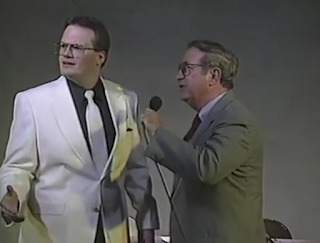
Look at that face. Do not boo the pookie.
Can I just start out by saying it's not fair how cute he is. Like… I'm trying to listen to him cut a promo and he's out here looking like the Southern boy of my dreams. Anyway!
He just called Greenville, SC a "nothin' happenin' stinkin' place", and that's how I already know we're off to the races. He then proceeds to roast the crowd like a Sunday ham, calling them backwoods and hillbillies, LMAO.
But then he gets real. Corny says the big corporations have turned professional wrestling into a circus sideshow -- SHOTS FIRED. He also says it's not about guts, but how juiced up on steroids you are (SHOTS FIRED IN THE DIRECTION OF VINCE MCMAHON). 🔥💀
"They've turned professional wrestling into a joke, so I turned my back on them."
Honestly, I feel that in my soul. Deeply.
He starts talking about managing the Midnight Express and I immediately melt into a pile of glitter and feelings. I mean, the Midnights are my fave tag team. He says no one ever gave them anything, and I agree. The Midnights fought their way to the top, dammit. Corny says because him and the Midnights wouldn't do any favors, they were pushed to the side. He says in the weeks to come, he's gonna be bringing a dynamic tag team to SMW. And y'all, I am vibrating. I know what's coming, but I'm still excited like it's Christmas morning.
Also, I paused the video to take a sip of my drink and caught Jim with this expression like he just remembered he left the oven on. 10/10. Iconic.:
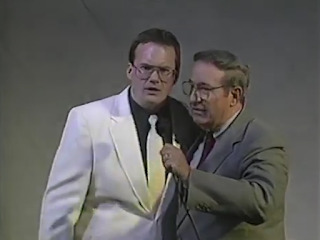
We head to a break, and I can't help but giggle like a gremlin because Corny is out here cutting anti-corporate promos, and not breathing a single word about the fact that he owns the damn company. King behavior, honestly. Respect the hustle.
After the break, we come back ready for another match.
Already in the ring is a poor soul named Paul Miller, looking like he just got called up from someone's backyard fed ten minutes ago. The crowd gives him the most polite "we don't know you" applause, and bless them for trying.
Then some video game boss music hits and the Black Scorpion comes out to the ring, and is accompanied by an actual police officer because apparently people in 1992 were still out here trying to fight wrestlers in public. Peak territory energy. Honestly, I love that for us, lmao.
So yes, dear readers, it's Paul Miller vs. The Black Scorpion, and I don't know what's about to happen, but I'm emotionally prepared for nonsense.
Bob Caudle points out that Black Scorpion has a size advantage over Paul Miller, and yeah -- one of these men is built like a fridge and the other looks like he got lost on his way to P.E., but we love an underdog story!
We start with a lock-up, and Scorpion immediately grabs a fistful of tights and knees Miller so hard in the gut I swear his soul briefly left his body. Then he clubs him in the back like he's tenderizing steak. Real nice.
Miller's trying his best though! He leapfrogs over Scorpion, hits a dropkick that does absolutely nothing, tries a clothesline with the same effect, and finally lands a flying forearm that manages to stagger the big man. Pin attempt! But not even a one count. Ouch.
Back on their feet, Miller throws a few punches, whips Scorpion into the ropes, and tries for a dropkick -- but Scorpion's like "Nah." He just holds the ropes and lets Miller crash like a toddler falling off a jungle gym.
Scorpion kicks him in the head, scoop slams him like he weighs nothing, and then lands a sidewalk slam with intent. Dutch chimes in with, "I wish he'd slam Brian Lee like that," and I cackle. Dutch wants blood, and honestly, same. A nasty clothesline from Scorpion flattens Miller again, and he picks him up for another slam, followed by a leg drop that probably rearranged his skeleton a bit. He lifts Miller once more, and the two begin trading blows. Scorpion gets Miller in the corner and hits him with some right hands.
Scorpion whips him out of the corner, but Miller reverses, sending Scorpion into the corner. Miller jumps on him, but Scorpion just grabs him like its nothing and carries him off, before nailing him with an atomic drop that looks brutal. Then WHAM -- another clothesline that nearly decapitates poor Paul. (Rest in peace, neck.)
Scorpion powerslams Miller and then picks him up for one more. He goes for another, but oh snap, Miller suddenly rolls him up in a small package and gets the three count!?
Winner: Paul "How Am I Still Alive" Miller via surprise pinfall
I'm gonna rate this one a 3.5/5. Solid little "big bully vs. scrappy underdog" match. Black Scorpion dominated like a final boss, but Miller snuck in the W like a raccoon in a Waffle House dumpster. We love to see it.
The on-screen graphic hits us with "After this… Prime Time Speaks" and I'm already bracing for Brian Lee to say something that makes Dutch roll his eyes so hard he sees his past lives.
Sure enough, after the break, Bob Caudle is standing by with "Prime Time" Brian Lee -- who, let's be real, looks like someone ordered the Undertaker from Wish but forgot to uncheck blonde hair, and check the facial hair option.
Bob welcomes him to SMW, and Lee launches into a promo about a heavyweight title tournament going down next week. He says he's entering it, winning it, and wearing that gold. Alright, confidence! Let's see if your work rate keeps up.
But oh no, Dutch Mantell is NOT letting this man bask in his post-win glow. Dutch interrupts like a messy uncle at Thanksgiving, telling Brian he made all kinds of mistakes during his match. He said he never would have let Horowitz clothesline him if it were him in the ring, and that he would have done the armbar differently, and the whole match too. I'm losing it over here. 🤣
Brian takes the mic and claps back without missing a beat, telling Dutch that if it were him in that match, he totally would have done things differently… he would have lost. 💀 He tells Dutch that he might be a good wrestler, but he's not ready for Prime Time. He then walks off like he just dropped his own mixtape.
Dutch stands there stunned, like someone just stole his squirrel gun, before finally grumbling: "Some people can't take constructive criticism…" 🤣🤣
The on-screen graphic lets us know it's time for our TV main event: Bobby Fulton vs. "The Russian Bear" Ivan Koloff!
Fun Fact Time! Technically, "Koloff" is an anglicized twist on the Russian surname Колов, which you'd usually see transliterated as "Kolov". (22 years of studying the Russian language!)
When we return from break, Ivan Koloff is already in the ring, radiating pure Cold War menace… and yet, the crowd? Crickets. I'm telling you, this audience was either tranquilized or gently lulled into a coma by the soft hum of fluorescent lights. And now here comes Bobby Fulton to mild applause -- like someone just pulled a sheet cake out of the fridge and offered them a slice. "Woo, I guess."
The match kicks off with Bobby trying to get a "USA! USA!" chant going… but even that chant sounded like it needed a nap. They lock up, and while the match is underway, a picture-in-picture promo from Ivan Koloff cuts in like a Cold War ghost. Koloff, in his thick Russian accent, calmly says he is very happy to be here -- unlike Bobby Fulton. He says it's over for him, and that he made a big mistake challenging him. (Spoiler alert: I think he's right.)
Koloff warns he's going to make Bobby suffer, and all I can think is -- Bobby's got the vibes of a chihuahua trying to square up with a pitbull. Like I admire the confidence… but sir, you are 50 pounds of mullet and optimism. Be careful.
So I'll be honest with you -- I was so busy listening to Ivan Koloff's Cold War villain monologue that I zoned out on the first minute of the match. Like, I know punches were thrown and stuff, but I was too busy mentally casting Koloff as the next Bond villain. Once the promo ended and my brain rebooted, Bobby and Ivan are locking up again. Koloff boots him in the gut like he's trying to knock out last week's Taco Bell, then tries to go for a DDT or something. Bobby says "not today, comrade" and reverses it into an arm twist. Before you know it, Bobby rolls him up and gets a two count. That was fast.
Ivan's had enough of that nonsese. He kicks Bobby's legs out from under him, then pounces on him and straight up chokes him. Sir. We're on local TV. At least light a candle first if you're gonna make it kinky. Bobby recovers, gets back up, and tries to rally the crowd with another "USA! USA!" chant. Buddy, I admire the effort, but this crowd is emotionally unavailable. They lock up again and trade arm wrenches until Koloff slams Bobby down like a sack of potatoes.
Meanwhile, on commentary, Dutch Mantell casually announces he'll be making his SMW in-ring debut next week and honestly? I'm kinda hyped. Let that mustache cook!
So Koloff's got Bobby by the wrist again, and he's wrenching it like he's trying to get the last drop of toothpaste out of the tube. He drags him to his feet with all the grace of a bear hauling a salmon, and slams him down again. That poor wrist is in danger of needing its own health insurance policy by now. Bobby, bless him, keeps bouncing back. They tie up again and stagger into the corner, where Bobby throws a couple of punches.
Ron Wright, our favorite hustling grandpa in a wheelchair, is at ringside, just scouting away like he's about to draft the next quarterback for the Smoky Mountain Super Bowl. You know he's thinking, "If one of these boys throws one more decent punch, I might just sponsor 'em… right after my hip surgery."
Koloff finds himself on the mat in a submission hold, and for a second you can tell he's wondering why the hell he agreed to wrestle a man who fights like an angry Jack Russell terrier. Fulton eventually lets go, and when they both get to their feet, Bobby's got that arm in a twist again like he's opening a jar of pickles. But Koloff ain't having it -- he boots him in the gut and sends him down hard, just to remind him of who the actual bear is. Then Koloff makes the mistake of taunting the crowd. Sir. These people are barely awake. Don't give them a reason to boo in full volume. Bobby sees his chance, and BAM! Dropkick right to Koloff's chest -- down he goes! And then comes the weirdest part: Bobby grabs Koloff by the ears like he's scooping up a bratty kid in a shopping cart, and yeets him across the ring with the force of a tornado.
Ron Wright was NOT impressed by that. 💀
Bobby's got Koloff in a headlock now, hanging on for dear life like he's riding a mechanical bull. But Koloff's like, "I've had enough of this nonsense," and yeets him backward with a big ol' back suplex. Oof. Bobby hits the mat like a sack of flour, and Koloff follows up by stomping him with the energy of a man who definitely once broke a table over someone's spine in a Soviet warehouse. He yanks Bobby to his feet -- probably just to make hitting him more satisfying -- and headbutts him like a man who considers concussions an appetizer. Bobby's seeing stars, cartoon birds, and possibly Jesus. But then -- plot twist! Koloff whips Fulton off the ropes, and BAM, Bobby flies back with a surprise flying press like a caffeinated squirrel! Goes for the pin! 1… 2… but Koloff kicks out! Not today, babyface!
We're heading out to ringside now, where all good Southern brawls go to really get unhinged. Bobby and Ivan are just swinging at each other like two raccoons fighting over the last Moon Pie behind a Waffle House. Ron Wright goes to shake Fulton's hand, but Koloff takes advantage and attacks, grabs Bobby, and TINK! -- his head meets the turnbuckle post like a cowbell solo. That sound was alarming (and hilarious), and I'm not sure if it came from the post or Bobby's skull. Then Koloff, being the courteous host he is, introduces Bobby to the chairs at ringside. Bobby meets them face first. Next stop? The barricade. Or as Bob Caudle adorably puts it: "the fence around the ring to separate the ring". Dutch is so done, immediately correcting him with "It's called a barricade, Bob," and I'm crying. Dutch's deadpan sass is undefeated. 🤣
Back in the ring, Koloff's stomping Bobby like he owes him rent money. And then -- BAM -- swinging neckbreaker! Bobby's kinda seeing stars a bit, and not the Hollywood kind. Koloff goes for the pin, but Bobby kicks out at two. Bobby rallies with a barrage of right hands, channeling that pure Fantastics energy (and maybe some lingering rage from being launched into a barricade). He knocks Koloff down, and gets him draped over the second rope like yesterday's laundry.
Enter Ron Wright again. He reaches up, real casual-like, and shakes Koloff's hand like they're closing a shady car deal.
Koloff gets to his feet, full of righteous Soviet rage, and clobbers Bobby with a right hand that might've been dipped in lead. He drops down for the pin -- 1, 2, 3 -- and that's all she wrote, folks.
Poor Bobby Fulton. He tried. He really did. But let's be honest: he had the odds of a paper towel in a monsoon. God bless that little chihuahua heart of his, but Ivan Koloff is built like a Cold War tank and just steamrolled him.
Winner: Ivan Koloff via pinfall.
This match was a 4.5/5. That .5? Entirely for the "TINK!" sound when Bobby's skull got introduced to the turnbuckle post like a dinner bell. I felt that in my soul.
Suddenly, like a bat outta Ohio, Jackie Fulton storms the ring, convinced Ron Wright slipped Koloff a little something-something during that sus handshake. Ron's sitting there in his wheelchair like, "Who, me?"
Meanwhile, Koloff decides to shut Jackie up with a punch -- but he swings and misses like a Little League dad. Jackie wastes zero time and starts throwing hands like it's Black Friday at a Walmart electronics section.
He shoves Koloff into the corner and starts delivering shoulder blocks like he's trying to ram the Soviet Union out of existence (which considering this is airing in 1992, it's already gone, but I digress). The crowd is finally waking up.
Well, well, well. The referee suddenly reverses the decision and declares the match back on, even though it already ended. Sir, this is an auditorium, not a time machine.
But listen -- my rating stands. 4.5/5. I don't care if they raise Bobby's hand while playing The Star-Spangled Banner on a kazoo. That TINK from the turnbuckle post was the true MVP here.
Jackie's still laying into Koloff like he's trying to avenge every generic Cold War movie ever made. But before he can channel the full power of American sibling rage, out comes Vladimir Koloff -- Ivan's nephew -- who hits the ring and drops Jackie like an overdue library book. Then, because presumably SMW said, "lets go full prison yard," Ivan busts out a chain. And now both Koloffs are choking Jackie out over the top rope, like this is some kind of Russian mob interrogation scene. Finally, Bobby Fulton returns, swinging like he just heard someone insult Garth Brooks. The Koloffs flee like cartoon villains, while the crowd screams in horror that someone needs to help Jackie, and Bobby Fulton has been declared the winner.
And let me be clear: I'm not recognizing the ref's decision.
This ain't the People's Court. This is Kickout Chaos, and in this house, that was a Koloff W in the chaos column.
Fun Fact: Despite their gruff accents and Soviet scowls, neither Ivan nor Vladimir Koloff are actually Russian. Ivan Koloff's real name was Oreal Parras, and he was from Canada. Vladimir Koloff's real name is Carl Brantley, and he's from North Carolina.
So really, it's not the Iron Curtain you need to fear -- it's the Canadian Carolina Curtain Rod they're swinging. 😉
Overall, a rock-solid first episode.
This debut served wrestling, chaos, shady heel tactics, and a surprise TINK that still echoes in my soul. Smoky Mountain Wrestling is greatness incarnate, and no matter what happens down the road, that legacy? Untouchable.
SMW didn't need pyro, billion-dollar budgets, or fancy LED screens -- it just needed a sexy racket-swinging loudmouth, a few classic babyfaces, and a crowd full of confused yet loyal locals.
Welcome to the Mountain, y'all. We're just getting started. 🖤
2 notes
·
View notes
Text
By: Robert E. Bartholomew
Published: Apr 30, 2025
“It is fundamental in science that no knowledge is protected from challenge. … Knowledge that requires protection is belief, not science.” —Peter Winsley
There is growing international concern over erosion of objectivity in both education and research. When political and social agendas enter the scientific domain there is a danger that they may override evidence-based inquiry and compromise the core principles of science. A key component of the scientific process is an inherent skeptical willingness to challenge assumptions. When that foundation is replaced by a fear of causing offense or conforming to popular trends, what was science becomes mere pseudoscientific propaganda employed for the purpose of reinforcing ideology.
When Europeans formally colonized New Zealand in 1840 with the signing of the Treaty of Waitangi, the culture of the indigenous Māori people was widely disparaged and their being viewed an inferior race. One year earlier historian John Ward described Māori as having “the intellect of children” who were living in an immature society that called out for the guiding hand of British civilization.1 The recognition of Māori as fully human, with rights, dignity, and a rich culture worthy of respect, represents a seismic shift from the 19th century attitudes that permeated New Zealand and much of the Western world, and that were used to justify the European subjugation of indigenous peoples.
Since the 1970s, Māori society has experienced a cultural Renaissance with a renewed appreciation of the language, art, and literature of the first people to settle Aotearoa—“the land of the long white cloud.” While speaking Māori was once banned in public schools, it is now thriving and is an official language of the country. Learning about Māori culture is an integral part of the education system that emphasizes that it is a treasure (taonga) that must be treated with reverence. Māori knowledge often holds great spiritual significance and should be respected. Like all indigenous knowledge, it contains valuable wisdom obtained over millennia, and while it contains some ideas that can be tested and replicated, it is not the same as science.
For example, Māori knowledge encompasses traditional methods for rendering poisonous karaka berries safe for consumption. Science, on the other hand, focuses on how and why things happen, like why karaka berries are poisonous and how the poison can be removed.2 The job of science is to describe the workings of the natural world in ways that are testable and repeatable, so that claims can be checked against empirical evidence—data gathered from experiments or observations. That does not mean we should discount the significance of indigenous knowledge—but these two systems of looking at the world operate in different domains. As much as indigenous knowledge deserves our respect, we should not become so enamoured with it that we give it the same weight as scientific knowledge.
The Māori Knowledge Debate
In recent years the government of New Zealand has given special treatment to indigenous knowledge. The issue came to a head in 2021, when a group of prominent academics published a letter expressing concern that giving indigenous knowledge parity with science could undermine the integrity of the country’s science education. The seven professors who signed the letter were subjected to a national inquisition. There were public attacks by their own colleagues and an investigation by the New Zealand Royal Society on whether to expel members who had signed the letter.3
Ironically, part of the reason for the Society’s existence is to promote science. At its core is the issue of whether “Māori ancient wisdom” should be given equal status in the curriculum with science, which is the official government position.4 This situation has resulted in tension in the halls of academia, where many believe that the pendulum has now swung to another extreme. Frustration and unease permeate university campuses as professors and students alike walk on eggshells, afraid to broach the subject for fear of being branded racist and anti-Māori, or subjected to personal attacks or harassment campaigns.
The Lunar Calendar
Infatuation with indigenous knowledge and the fear of criticising claims surrounding it has infiltrated many of the country’s key institutions, from the health and education systems to the mainstream media. The result has been a proliferation of pseudoscience. There is no better example of just how extreme the situation has become than the craze over the Māori Lunar Calendar. Its rise is a direct result of what can happen when political activism enters the scientific arena and affects policymaking. Interest in the Calendar began to gain traction in late 2017.

[ An example of the Maramataka Māori lunar calendar ]
Since then, many Kiwis have been led to believe that it can impact everything from horticulture to health to human behavior. The problem is that the science is lacking, but because of the ugly history of the mistreatment of the Māori people, public institutions are afraid to criticize or even take issue anything to do with Māori culture. Consider, for example, media coverage. Between 2020 and 2024, there were no less than 853 articles that mention “maramataka”—the Māori word for the Calendar which translates to “the turning of the moon.” After reading through each text, I was unable to identify a single skeptical article.5 Many openly gush about the wonders of the Calendar, and gave no hint that it has little scientific backing.
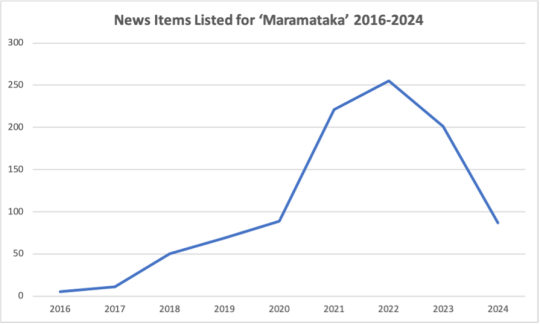
[ Based on the Dow Jones Factiva Database ]
The Calendar once played an important role in Māori life, tracking the seasons. Its main purpose was to inform fishing, hunting, and horticultural activities. There is some truth in the use of specific phases or cycles to time harvesting practices. For instance, some fish are more active or abundant during certain fluctuations of the tides, which in turn are influenced by the moon’s gravitational pull. Two studies have shown a slight increase in fish catch using the Calendar.6 However, there is no support for the belief that lunar phases influence human health and behavior, plant growth, or the weather. Despite this, government ministries began providing online materials that feature an array of claims about the moon’s impact on human affairs. Fearful of causing offense by publicly criticizing Māori knowledge, the scientific position was usually nowhere to be found.
Soon primary and secondary schools began holding workshops to familiarize staff with the Calendar and how to teach it. These materials were confusing for students and teachers alike because most were breathtakingly uncritical and there was an implication that it was all backed by science. Before long, teachers began consulting the maramataka to determine which days were best to conduct assessments, which days were optimal for sporting activities, and which days were aligned with “calmer activities at times of lower energy phases.” Others used it to predict days when problem students were more likely to misbehave.7
As one primary teacher observed: “If it’s a low energy day, I might not test that week. We’ll do meditation, mirimiri (massage). I slowly build their learning up, and by the time of high energy days we know the kids will be energetic. You’re not fighting with the children, it’s a win-win, for both the children and myself. Your outcomes are better.”8 The link between the Calendar and human behavior was even promoted by one of the country’s largest education unions.9 Some teachers and government officials began scheduling meetings on days deemed less likely to trigger conflict,10 while some media outlets began publishing what were essentially horoscopes under the guise of ‘ancient Māori knowledge.’11
The Calendar also gained widespread popularity among the public as many Kiwis began using online apps and visiting the homepages of maramataka enthusiasts to guide their daily activities. In 2022, a Māori psychiatrist published a popular book on how to navigate the fluctuating energy levels of Hina—the moon goddess. In Wawata Moon Dreaming, Dr. Hinemoa Elder advises that during the Tamatea Kai-ariki phase people should: “Be wary of destructive energies,”12 while the Māwharu phase is said to be a time of “female sexual energy … and great sex.”13 Elder is one of many “maramataka whisperers” who have popped up across the country.
By early 2025, the Facebook page “Maramataka Māori” had 58,000 followers,14 while another, “Living by the Stars” on Māori Astronomy had 103,000 admirers.15 Another popular book, Living by the Moon, also asserts that lunar phases can affect a person’s energy levels and behavior. We are told that the Whiro phase (new moon) is associated with troublemaking. It even won awards for best educational book and best Māori language resource.16 In 2023, Māori politician Hana Maipi-Clarke, who has written her own book on the Calendar, stood up in Parliament and declared that the maramataka could foretell the weather.17
A Public Health Menace
Several public health clinics have encouraged their staff to use the Calendar to navigate “high energy” and “low energy” days and help clients apply it to their lives. As a result of the positive portrayal of the Calendar in the Kiwi media and government websites, there are cases of people discontinuing their medication for bipolar disorder and managing contraception with the Calendar.18 In February 2025, the government-funded Māori health organization, Te Rau Ora, released an app that allows people to enhance their physical and mental health by following the maramataka to track their mauri (vital life force).
While Te Rau Ora claims that it uses “evidence-based resources,” there is no evidence that mauri exists, or that following the phases of the moon directly affects health and well-being. Mauri is the Māori concept of a life force—or vital energy—that is believed to exist in all living beings and inanimate objects. The existence of a “life force” was once the subject of debate in the scientific community and was known as “vitalism,” but no longer has any scientific standing.19 Despite this, one of app developers, clinical psychologist Dr. Andre McLachlan, has called for widespread use of the app.20 Some people are adamant that following the Calendar has transformed their lives, and this is certainly possible given the belief in its spiritual significance. However, the impact would not be from the influence of the Moon, but through the power of expectation and the placebo effect.
No Science Allowed
While researching my book, The Science of the Māori Lunar Calendar, I was repeatedly told by Māori scholars that it was inappropriate to write on this topic without first obtaining permission from the Māori community. They also raised the issue of “Māori data sovereignty”—the right of Māori to have control over their own data, including who has access to it and what it can be used for. They expressed disgust that I was using “Western colonial science” to validate (or invalidate) the Calendar.
This is a reminder of just how extreme attempts to protect indigenous knowledge have become in New Zealand. It is a dangerous world where subjective truths are given equal standing with science under the guise of relativism, blurring the line between fact and fiction. It is a world where group identity and indigenous rights are often given priority over empirical evidence. The assertion that forms of “ancient knowledge” such as the Calendar, cannot be subjected to scientific scrutiny as it has protected cultural status, undermines the very foundations of scientific inquiry. The expectation that indigenous representatives must serve as gatekeepers who must give their consent before someone can engage in research on certain topics is troubling. The notion that only indigenous people can decide which topics are acceptable to research undermines intellectual freedom and stifles academic inquiry.
While indigenous knowledge deserves our respect, its uncritical introduction into New Zealand schools and health institutions is worrisome and should serve as a warning to other countries. When cultural beliefs are given parity with science, it jeopardizes public trust in scientific institutions and can foster misinformation, especially in areas such as public health, where the stakes are especially high.
#Maramataka Māori#Maramataka#indigenous knowledge#Māori lunar calendar#pseudoscience#what science is#science#indigenous wisdom#other ways of knowing#epistemology#ways of knowing#mauri#objective reality#objectivity#Western colonial science#religion is a mental illness
2 notes
·
View notes